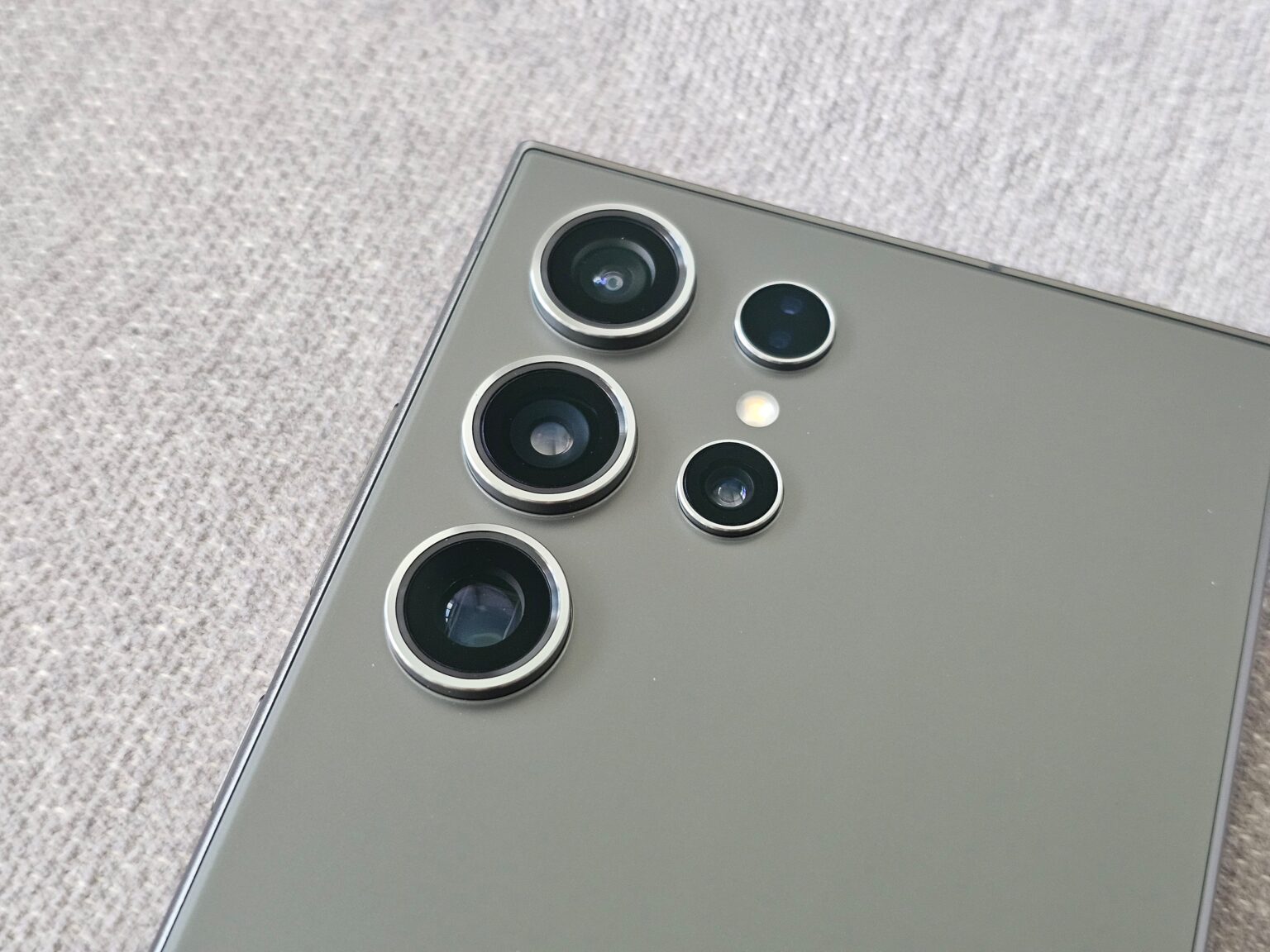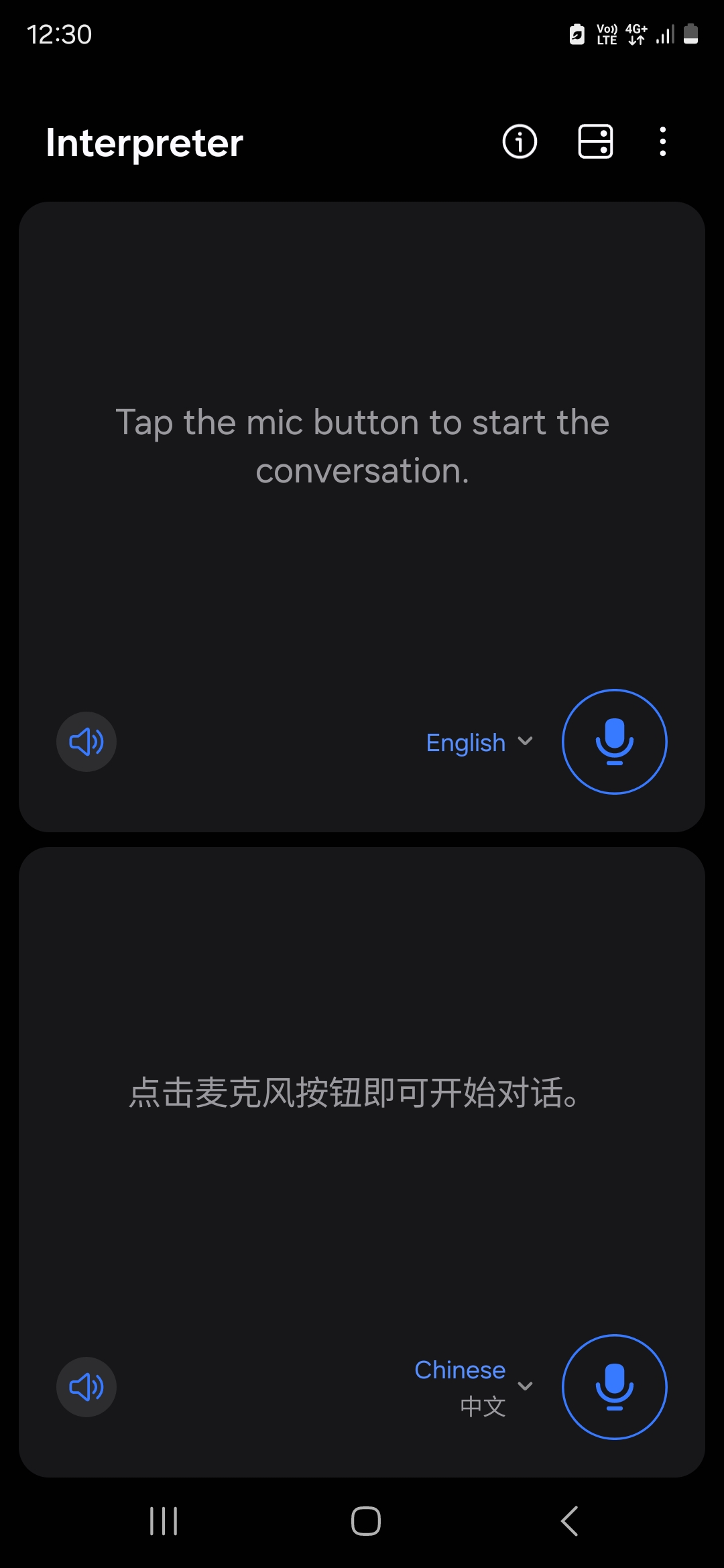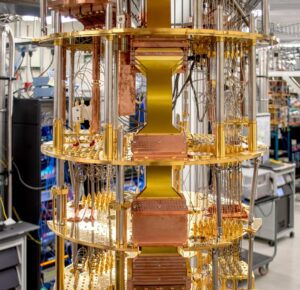All the hype around the Samsung Galaxy S24 Ultra launch week a couple of weeks ago was on artificial intelligence (AI). At the same time, many remarked that the new flagship looked so much like last year’s.
With the new phone in my hands this past week or so, I finally got to assess if it is worth the almost-S$2,000 that Samsung is asking for the basic 256GB model.
To recap, the Galaxy S24 Ultra packs an S Pen stylus and four-camera array that have come to define the range. However, it lets go of the 10-megapixel (MP) 10x periscopic telephoto on the Galaxy S23 Ultra for a 50MP 5x telephoto that promises equal or better performance at 10x zoom.
There is little exterior change, but the Galaxy S24 Ultra does boast flatter curves on its 6.8-inch OLED display that tops out at a brighter 2,600 nits. It also packs the latest Qualcomm Snapdragon 8 Gen 3 for Galaxy processor, which runs at a higher clock speed than a “non-Galaxy” part.
Design
Not much has changed in the Galaxy S24 Ultra’s exterior. Arguably, the differences each year have been subtle since the Galaxy S22 Ultra brought the Note-esque angular outlook to the S Ultra line. The new phone measures 162 x 79 x 8.6 millimetre and weights 233 grams, firmly in phablet territory.
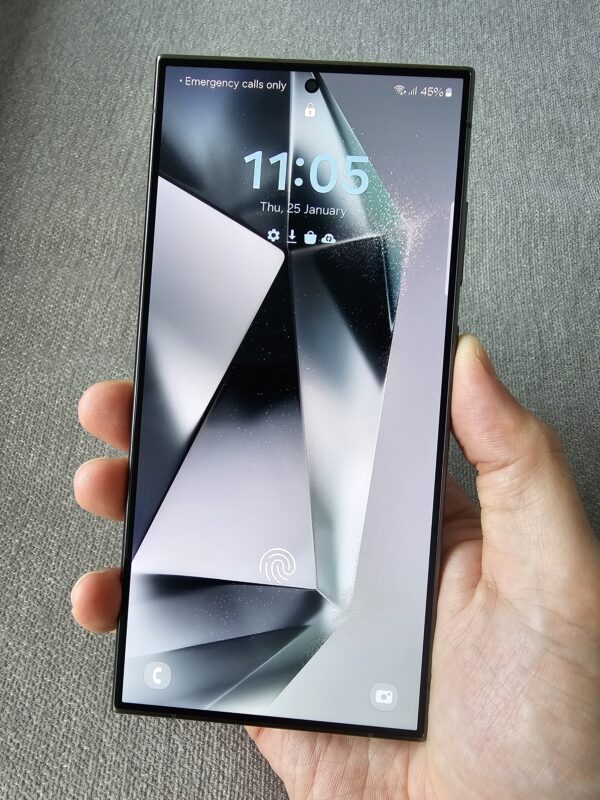
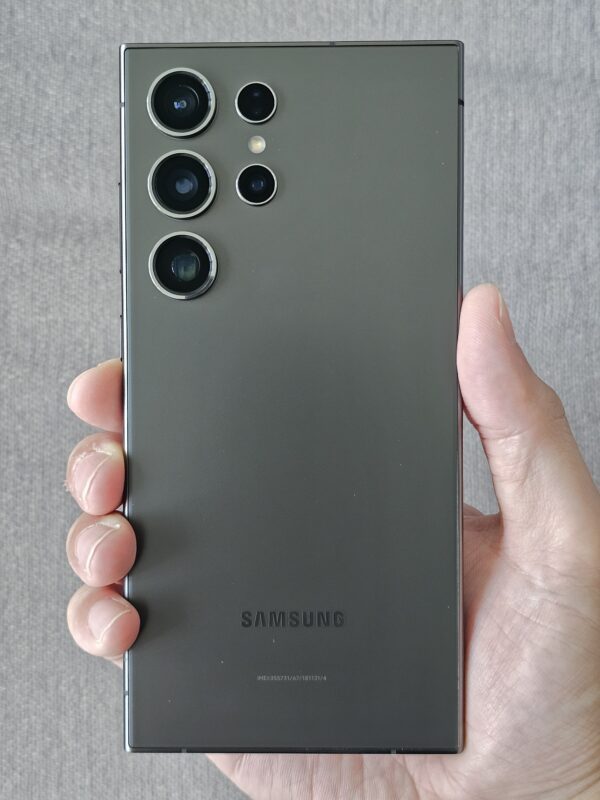
Still, the top, bottom and side rails of the device have switched from a glossy aluminium in the Galaxy S23 Ultra to a matte titanium. The sides are even more angular than before.
Personally, I like this change. The glossy finish is prone to peeling and scratches, especially where the stylus inlet was – as my own Galaxy S23 Ultra attested. A matte finish also offers a more secure grip, and angular corners make the phone feel more substantial in hand.
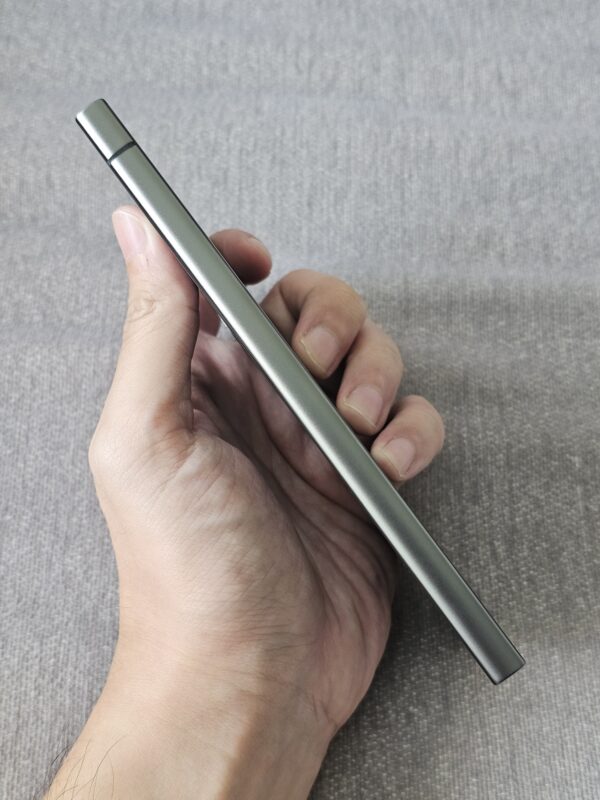
The back of the phone has retained the same colour and matte finish as the side rails on our Titanium Black unit. Everything looks cohesive and the finish is fingerprint resistant. The overall hand feel, however, is still of a precious, smooth device.
I would still put on a case, if only to not drop the phone and dent its premium body.
Screen
The screen on the Galaxy S24 Ultra is a 6.8-inch Quad HD AMOLED outfit with 120Hz refresh rate and HDR10+ support. The aspect ratio is a relatively wide 19.5:9 with 1,440 x 3,120 pixels.
The display has nearly flat edges on its left and right ends, which is an improvement. First, it works better with tempered glass screen protectors than the Galaxy S23 Ultra.
Also, while writing on the screen with the S Pen, your pinky finger tends to sit on the edge of the display for grip. My pinky finger now feels less painful and unstable while, say, annotating a document than before.
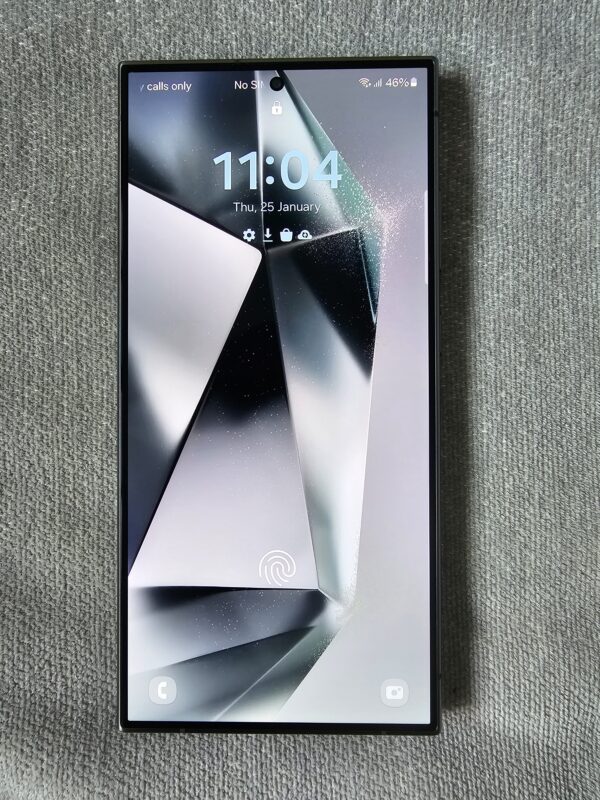
The display is protected with the latest Corning Gorilla Glass Armor. I haven’t tested out its claimed scratch and drop resistance, but what’s apparent is a better anti-glare coating. Under direct sunlight, it’s easier to look at the display without having to tilt it off-centre.
It also helps to have much higher maximum brightness at 2,600 nits, a near 50 per cent jump. I measured 625 nits after manually adjusting the brightness slider to the maximum, 1,075 nits when I activated the “Extra Brightness” option, and 2,450 nits when I brought the device under the sun with Adaptive Brightness activated.
Refresh rates, meanwhile, were dynamic in my tests and I am pleased. When reading static content, the display remained at 24Hz. It defaulted to 30Hz when playing full-screen YouTube videos.
While scrolling and panning, refresh rates increased to 120Hz, remained at 60Hz for on-screen animation, then dropped back to 24Hz once done. This means it allows for smooth-looking movements on screen while saving battery life when there is little activity.
Performance
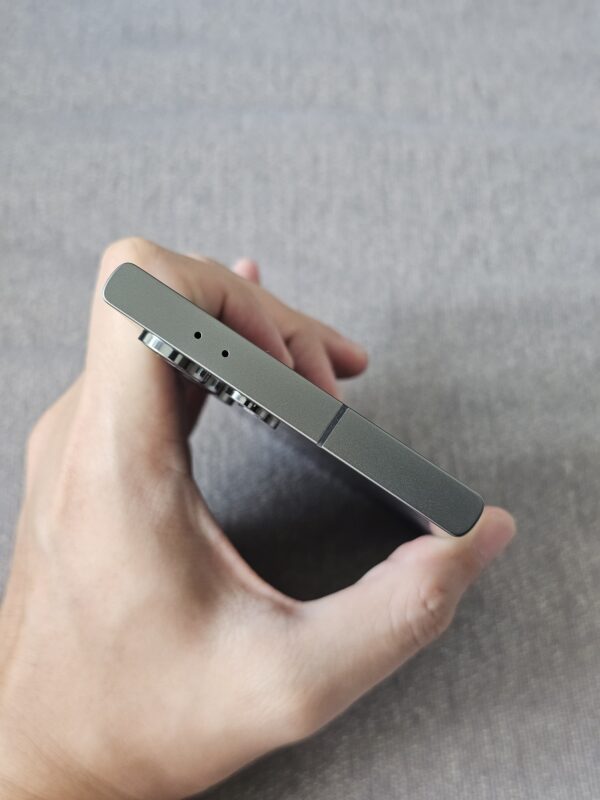
All Galaxy S24 Ultras use the latest and greatest Snapdragon 8 Gen 3 for Galaxy chip, likely top-of-bin silicon chosen and overclocked for Samsung. This is paired with an Adreno 750 graphics core.
I used PCMark 10 for Android’s Work 3.0 Professional to simulate day-to-day performance workloads like browsing the Web, editing photos and videos, and writing and manipulating data. The score averaged 17,900, in line with other phones driven by a Snapdragon 8 Gen 3.
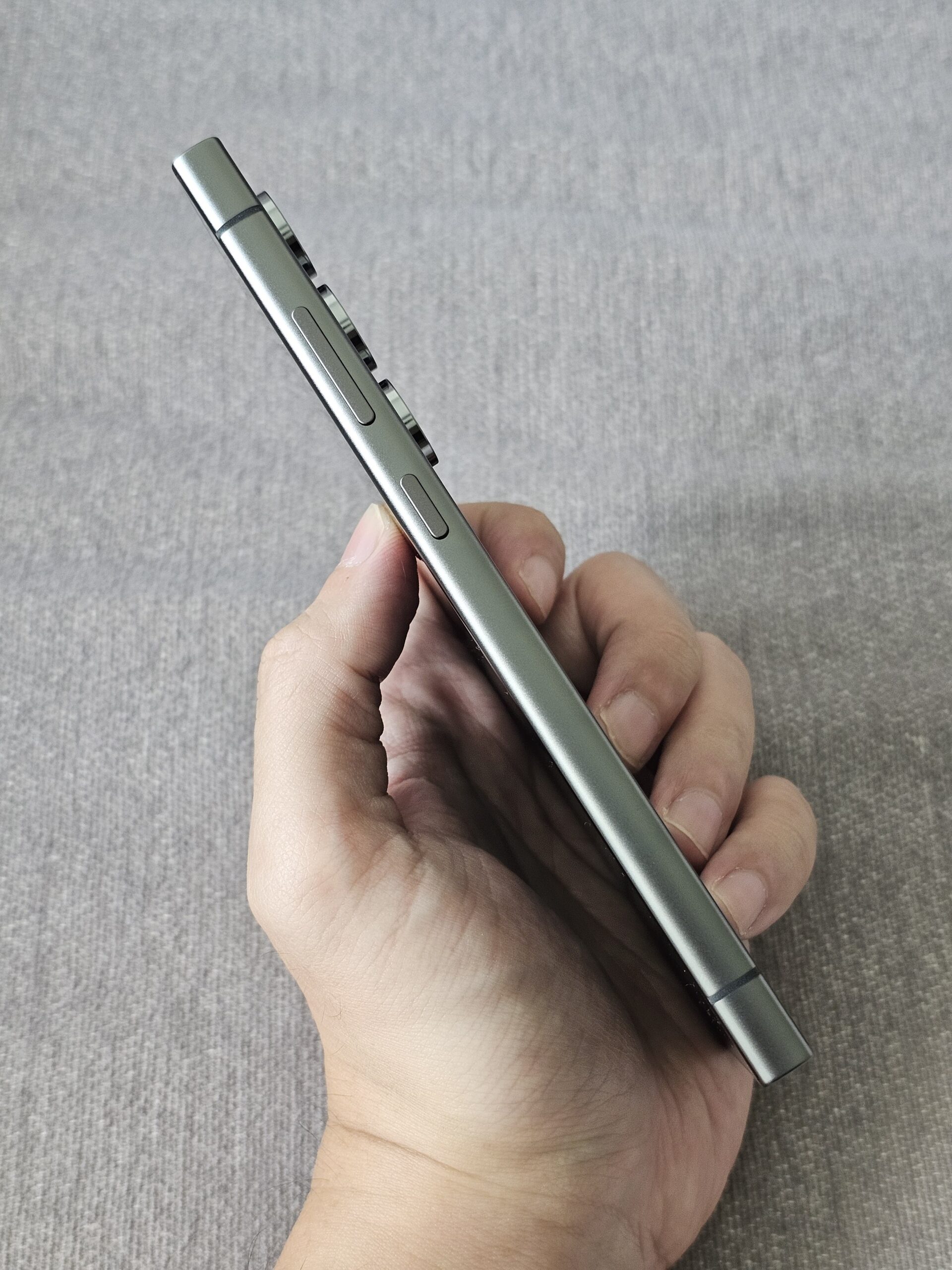
To test gaming capabilities, I fired up Asphalt 9: Legends. Cutscenes were smooth, resolution crisp and the game was responsive. The anti-aliasing was not perfect even on this premium device, but the rendering of in-game surfaces (like buildings) were great.
With the 3DMark for Android (Wild Life Extreme) benchmark, which tested the device’s handling of commonly-used game rendering engines, the phone scored 5,000. Framerates ranged from 23 to 37 fps.
Artificial Intelligence
Okay, AI is the selling point of the Galaxy S24 Ultra this year, and a few of them are admittedly useful.
I did not test everything, but top of list is probably Interpreter, which I understand to be co-developed with Google. Conveniently accessible from the pull-down menu, simply fire it up, speak in your language, and a translated readout follows in seconds.
It is a very natural way to, say, seek assistance from a local in a foreign land. I tested the English-to-Mandarin (and vice versa) function, and the interpreter did not struggle with my Singapore-accented English.
I can imagine this being a godsend for Singaporeans visiting Japan and Korea, both of which are languages supported by interpreter.
Circle to Search is also very useful. Just hold the home button, and circle anything on the screen that you wish to know more about. Google will come to the rescue without you having to fire up the search bar.
Separately, the Generative Edit mode in Samsung’s Gallery app allows you to remove (or move) people and/or objects. The remove function works a little better than the move in my tests, though the results are not perfect. I wish the AI could play a more active role in re-mastering image colour, brightness and contrast, though.
Features and battery
Samsung is conventional with its SIM card tray, which holds two SIM cards, no microSD card, and needs to be ejected with a pin. (Sony phones, by contrast, don’t require a pin).
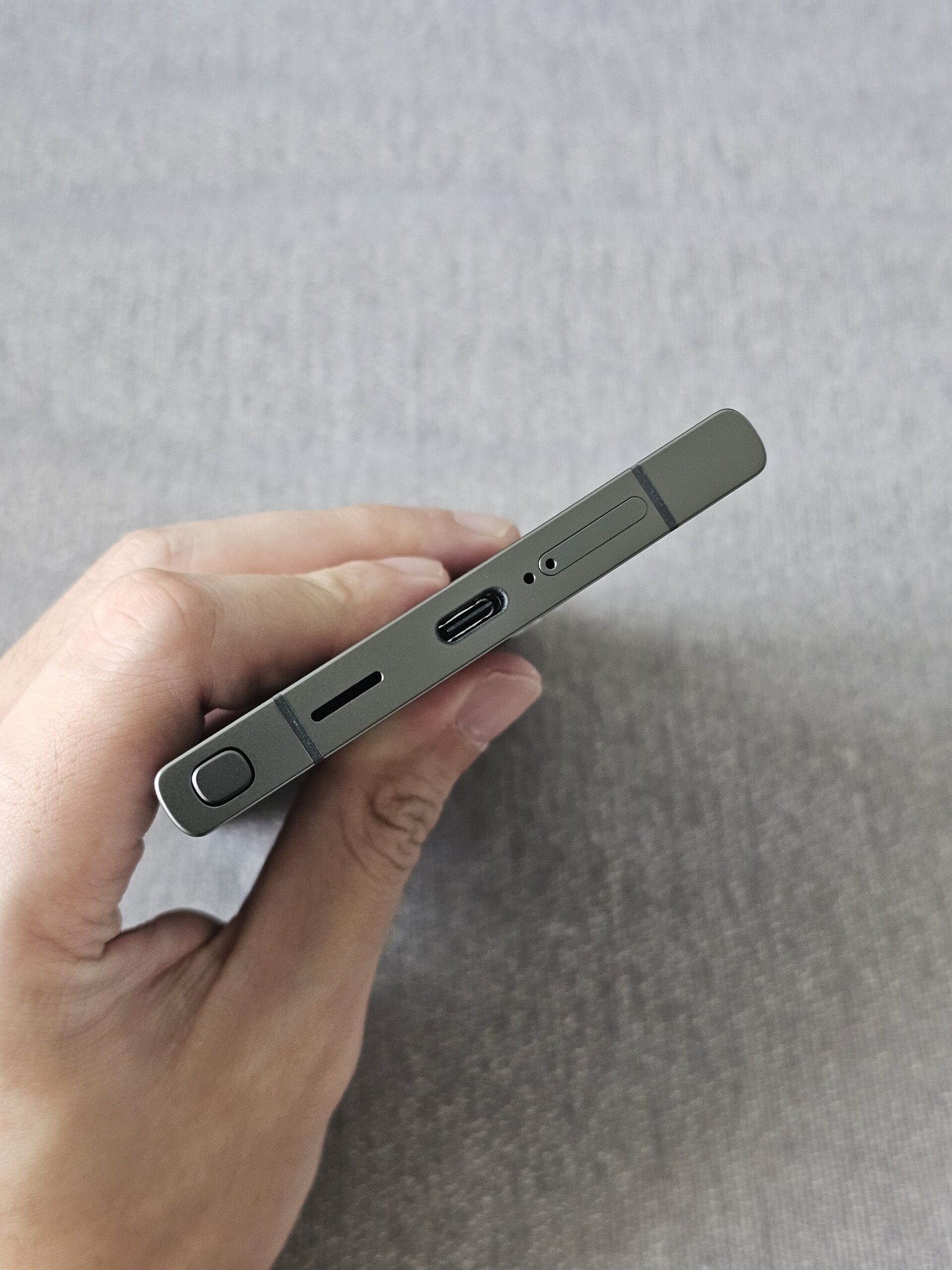
For the new Samsung flagship, the fingerprint sensor is built onto the lowest fifth of the display. I found it accurate and quick, and positioned just where one grips the device to unlock it.
The Galaxy S24 Ultra is IP68 rated for dust and water resistance, at 1.5m depth up to 30 minutes. So, it should be safe for the usual jog or playing in the rain.
Battery life from the 5,000mAh cell is better at standard refresh rate. I calibrated the screen to 200 nits brightness, and ran the PCMark 10 for Android’s Work 3.0 Battery Life test with Wi-Fi running throughout. With adaptive (dynamic 120Hz) refresh rate turned on, the device lasted 14 hours 35 mins.
I did not manage to complete the test at standard refresh rate, but my own use informed me that battery life is perceptibly better at standard mode than adaptive mode.
The Galaxy S23 Ultra also supports 45W wired charging on the USB Power Delivery 3 standard and includes a USB-C cable. However, the box doesn’t come with a charger.
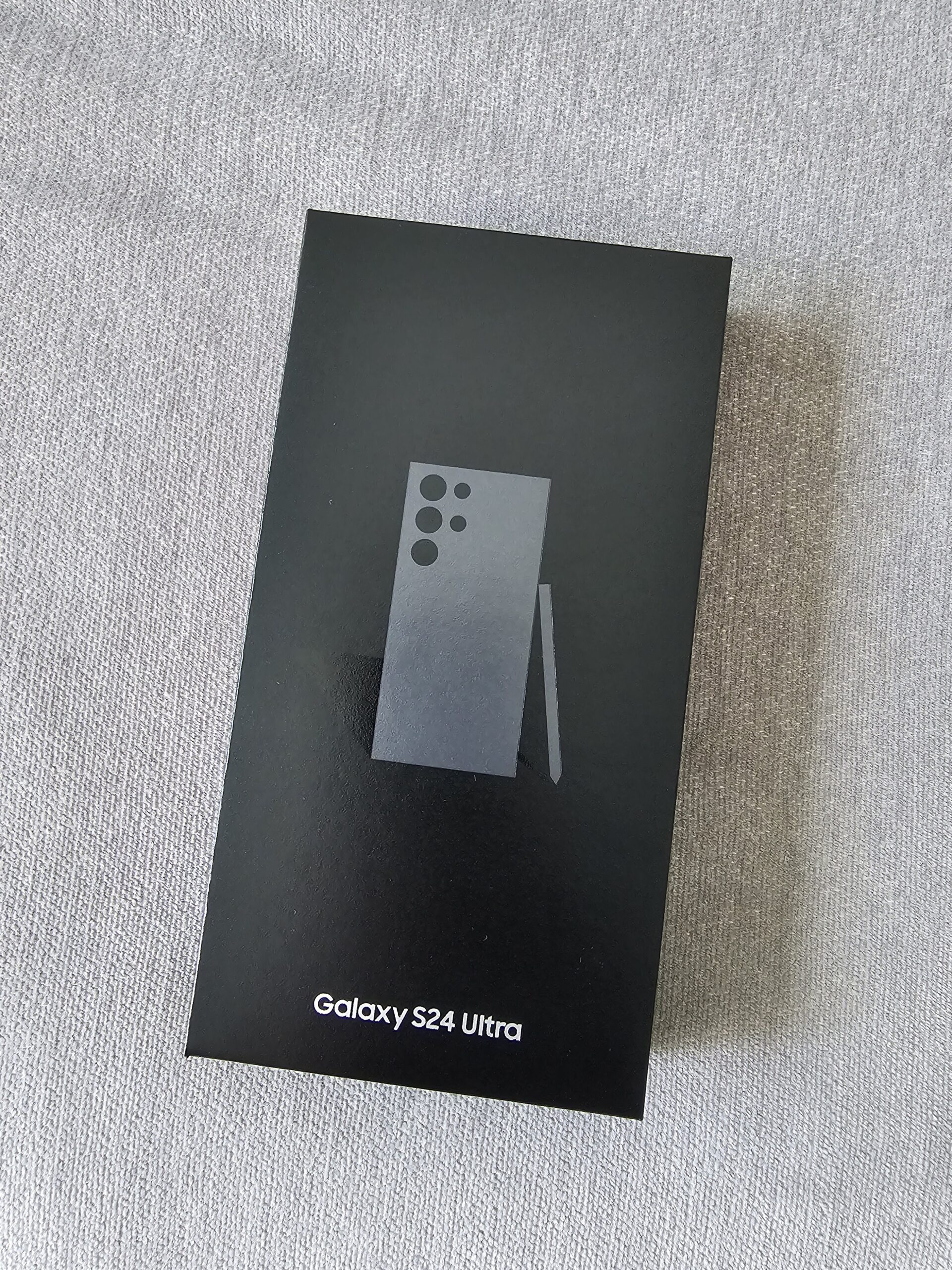
Cameras
At first glance, the camera hardware on the Galaxy S24 Ultra feels like a downgrade. The series-defining 10x periscope zoom camera has been swapped for a 5x one. However, this new 5x zoom camera comes with a larger sensor and a 50MP resolution, higher than the 10MP on the 10x outfit.
In my tests, this has allowed Samsung to offer optical zoom quality shots across 0.6x, 1x, 3x, 5x and 10x magnification levels. I found the 10x shots producing better brightness and contrast than on the Galaxy S23 Ultra, to make up for the small decline in detail (for instance, of small text on signs).
However, the quality improvement at the 5x zoom level enabled by the new lens is unparalleled. It filled a zoom gap between the 3x and 10x zoom with aplomb.
While the wide (recently upgraded in 2023), ultrawide and 3x telephoto lens remain unchanged, there are software processing changes for appreciable (though not substantial) year-on-year improvements.
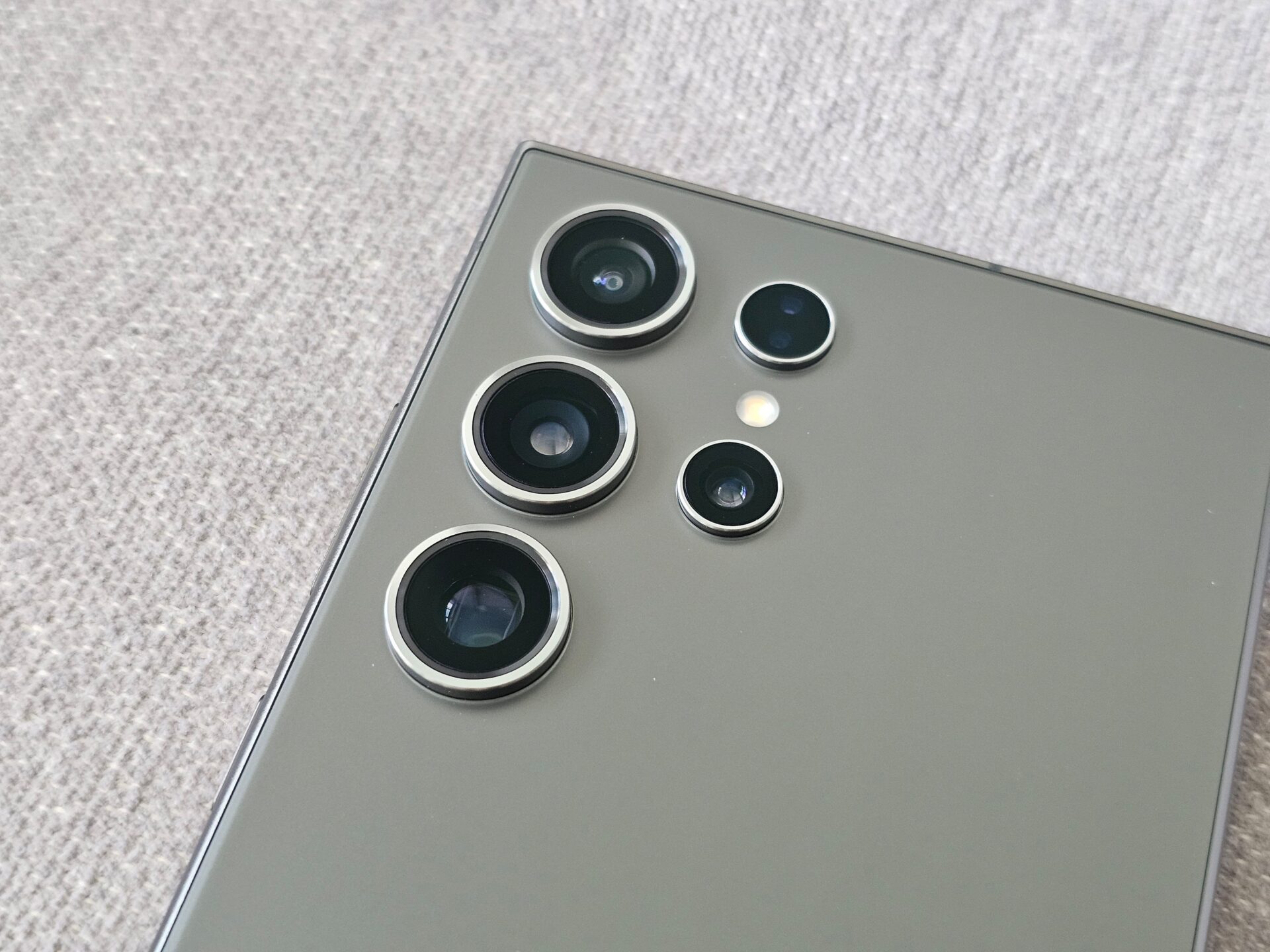
Here are the cameras on the Galaxy S24 Ultra:
Wide: 200 MP, f/1.7, 24mm, 1/1.3-inch sensor, 0.6µm pixels, multi-directional phase detect autofocus (PDAF), Laser AF, OIS
3x Telephoto: 10 MP, f/2.4, 67mm, 1/3.52-inch sensor, 1.12µm pixels, Dual Pixel PDAF, OIS
5x Telephoto: 50 MP, f/3.4, 111mm, PDAF, OIS
Ultrawide: 12 MP, f/2.2, 13mm, 120˚ field-of-view, 1/2.55-inch sensor, 1.4µm pixels, Dual Pixel PDAF
Selfie: 12 MP, f/2.2, 26mm, Dual Pixel PDAF
For outdoor shots in the day, I went to various parts of Jurong Lake Gardens. At the “hideout”, I got an excellent performance by the camera system.
There is no obvious warping or blowing out of colours on the ultrawide lens, even if the shrubbery in the background can lack some detail. The wide shot has, naturally, much more crisp detail while maintaining good colour vibrance and balance.
At 3x zoom, all details remain pin sharp, no matter if you’re looking at the grass mound in the foreground or housing blocks in the background. Going to 5x, we can see the bird hide becomes the focus, and the detail on the wooden planks are clear, down to the screws and the ageing of the wood.
There are also no complaints at 10x, though the colour science slightly overexposed the wooden planks to keep them visible.
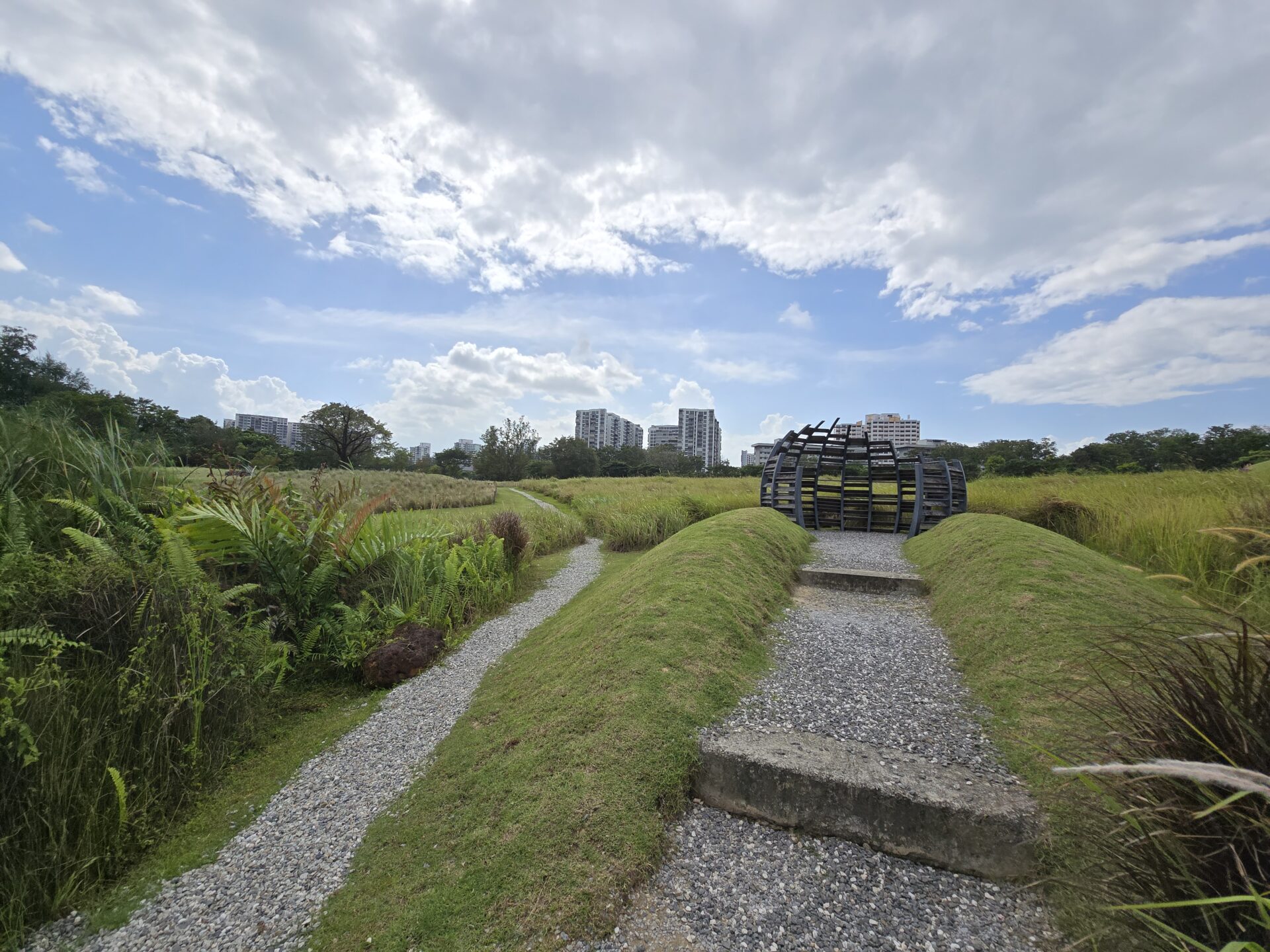
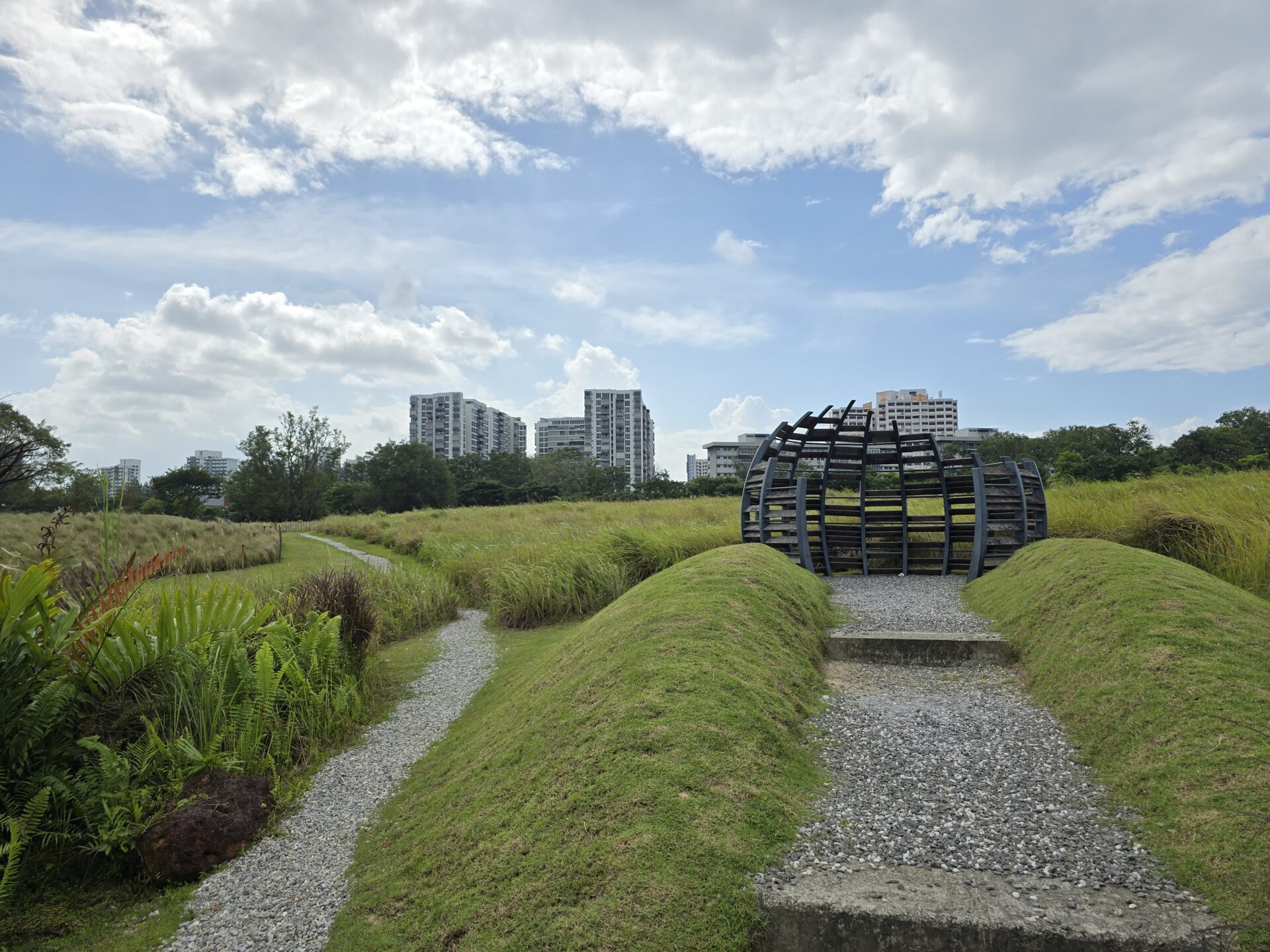
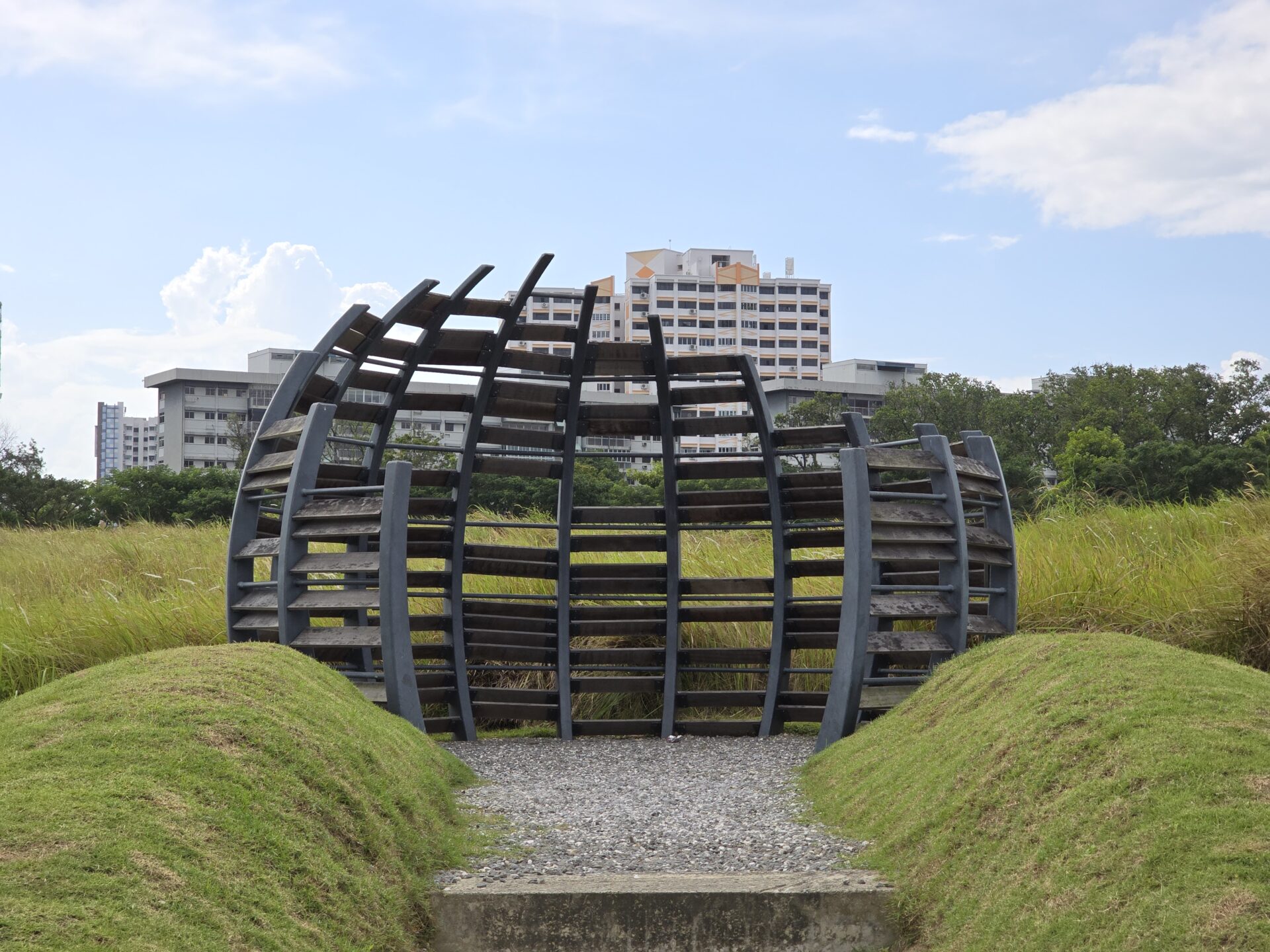
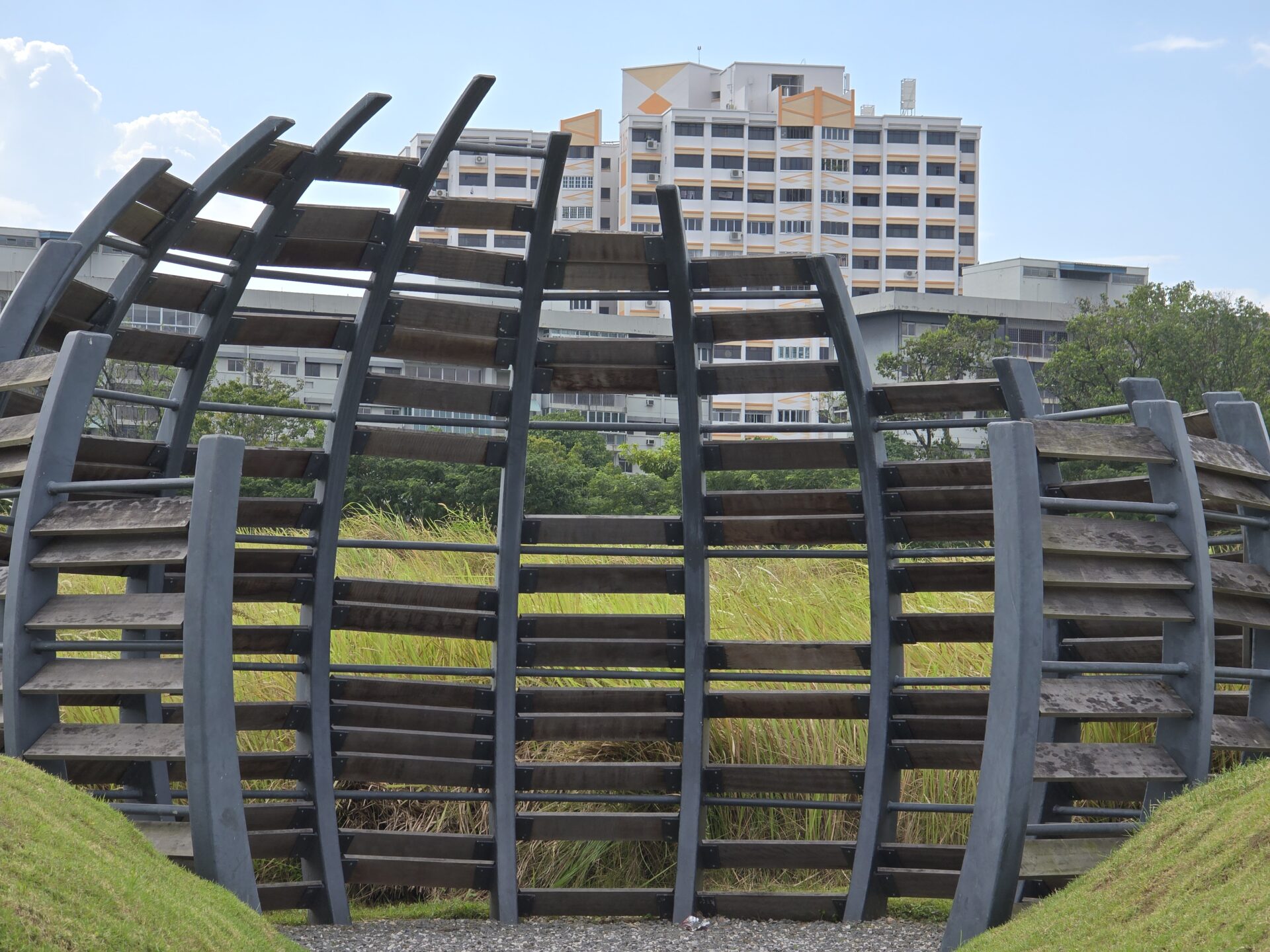
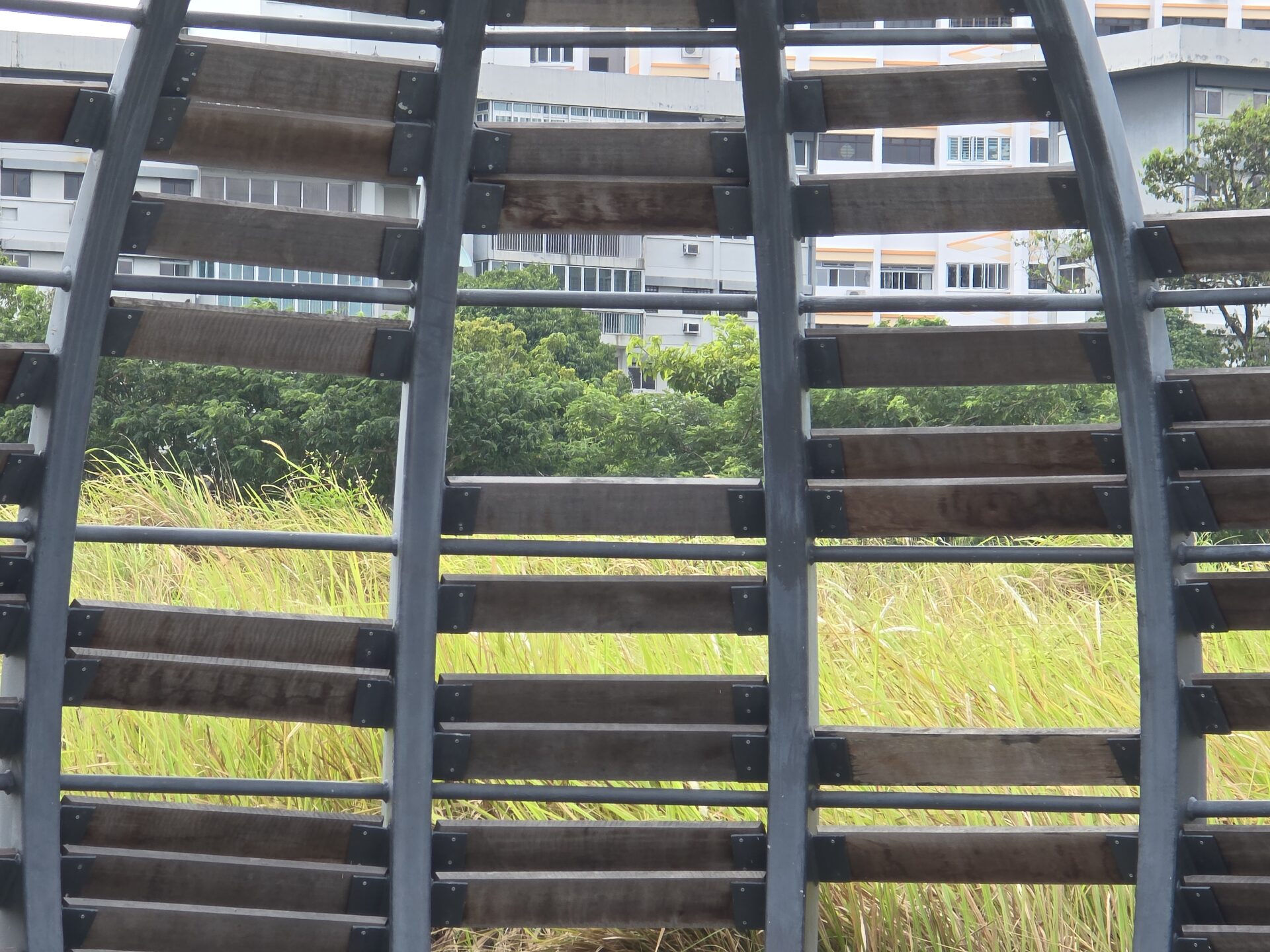
At another spot – I call it the Terracotta Overlook – the skies and granite seats are beautifully rendered. The wide shot takes the same vista and improves detail, if a little dark but that is easily tweaked. Going to 3x, the granite seats and shrubbery behind retain excellent detail, and I even detect a little bokeh against the lake in the background.
Going into 5x, the characteristics of the 3x shot are retained and magnified nicely. At 10x, the detail retention is admirable even if the rest of the image starts becoming a little more washed out. You can still make out the detail on the blue roof and wooden slats of the shed very well.
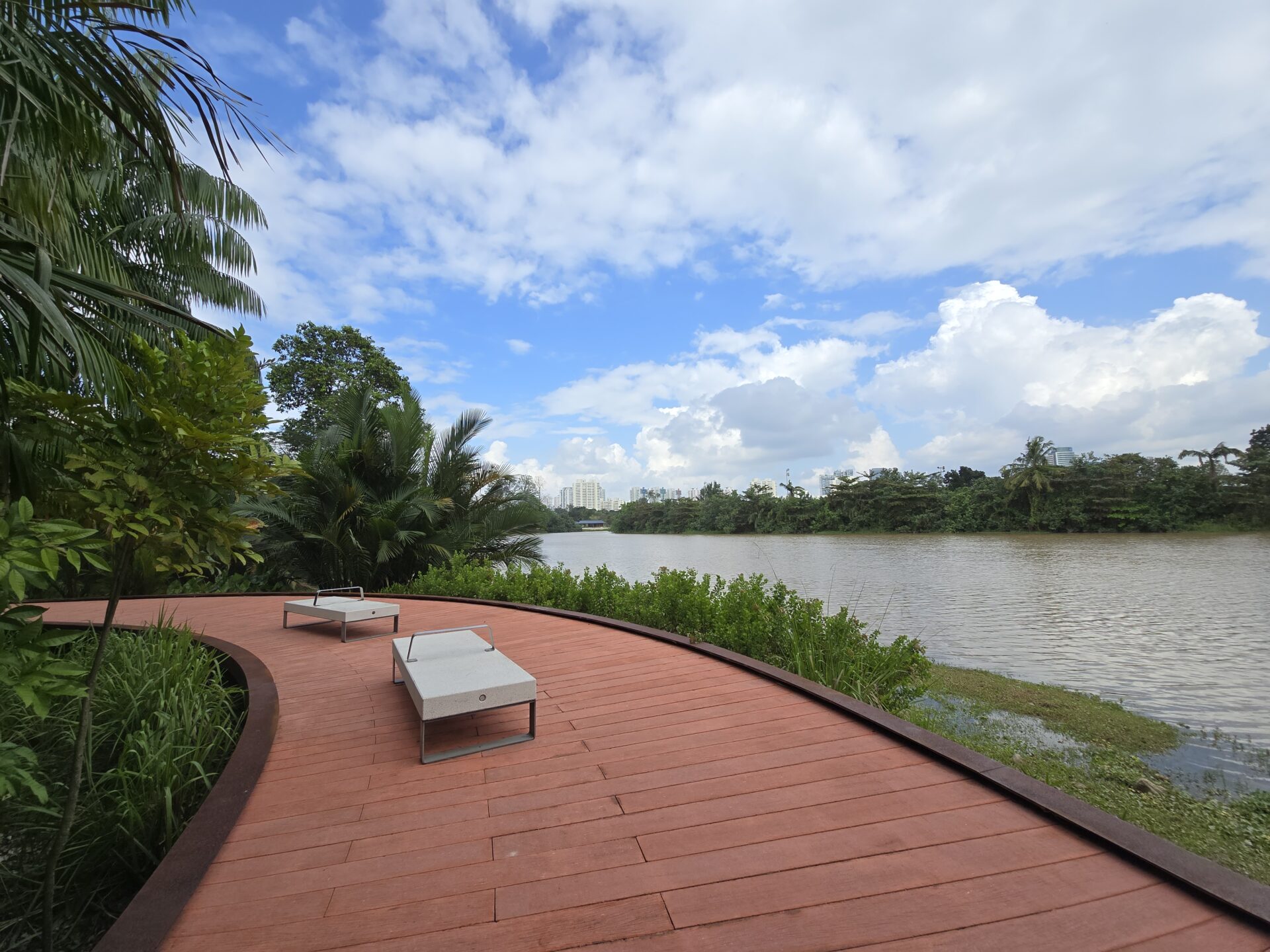
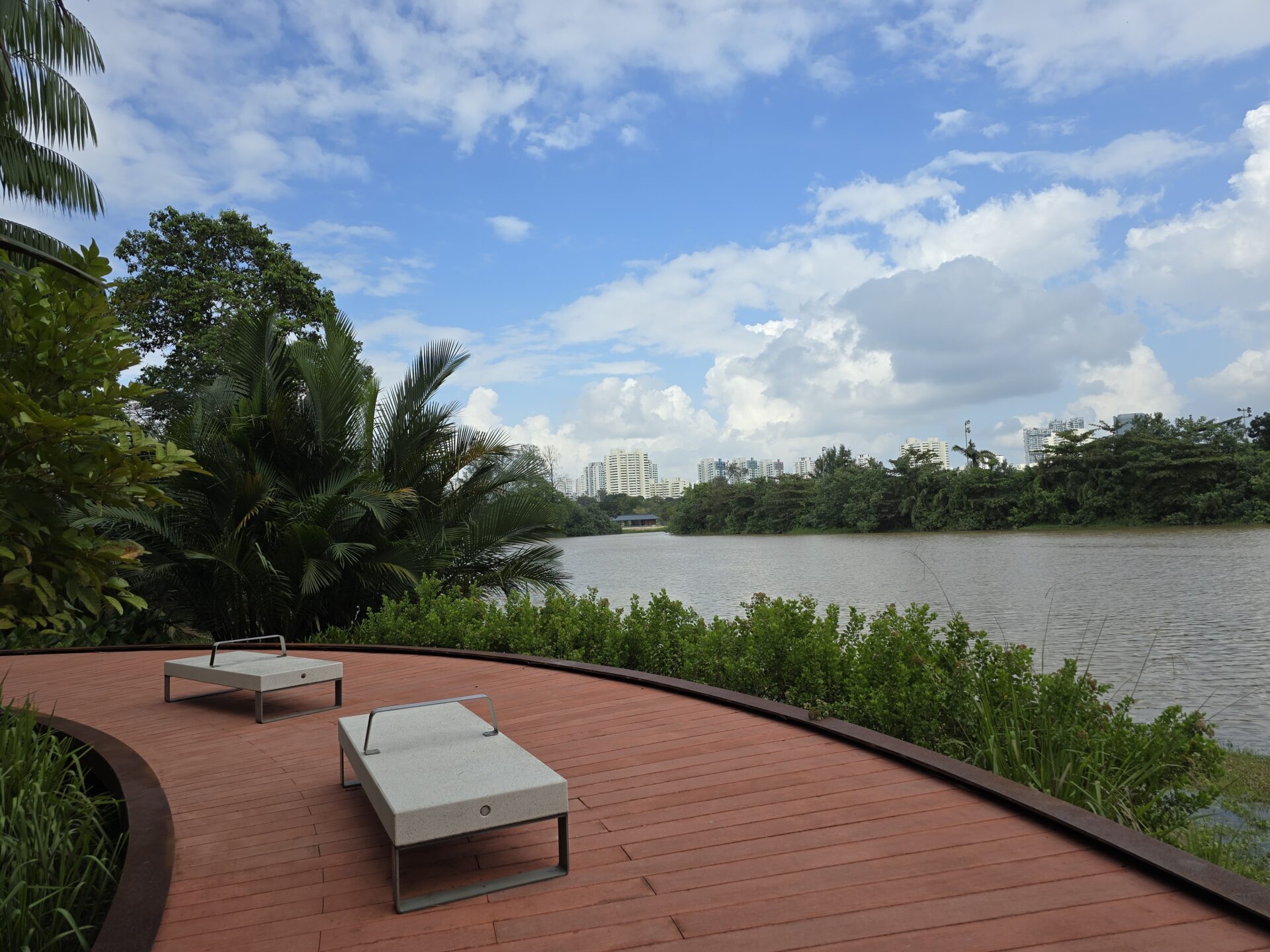
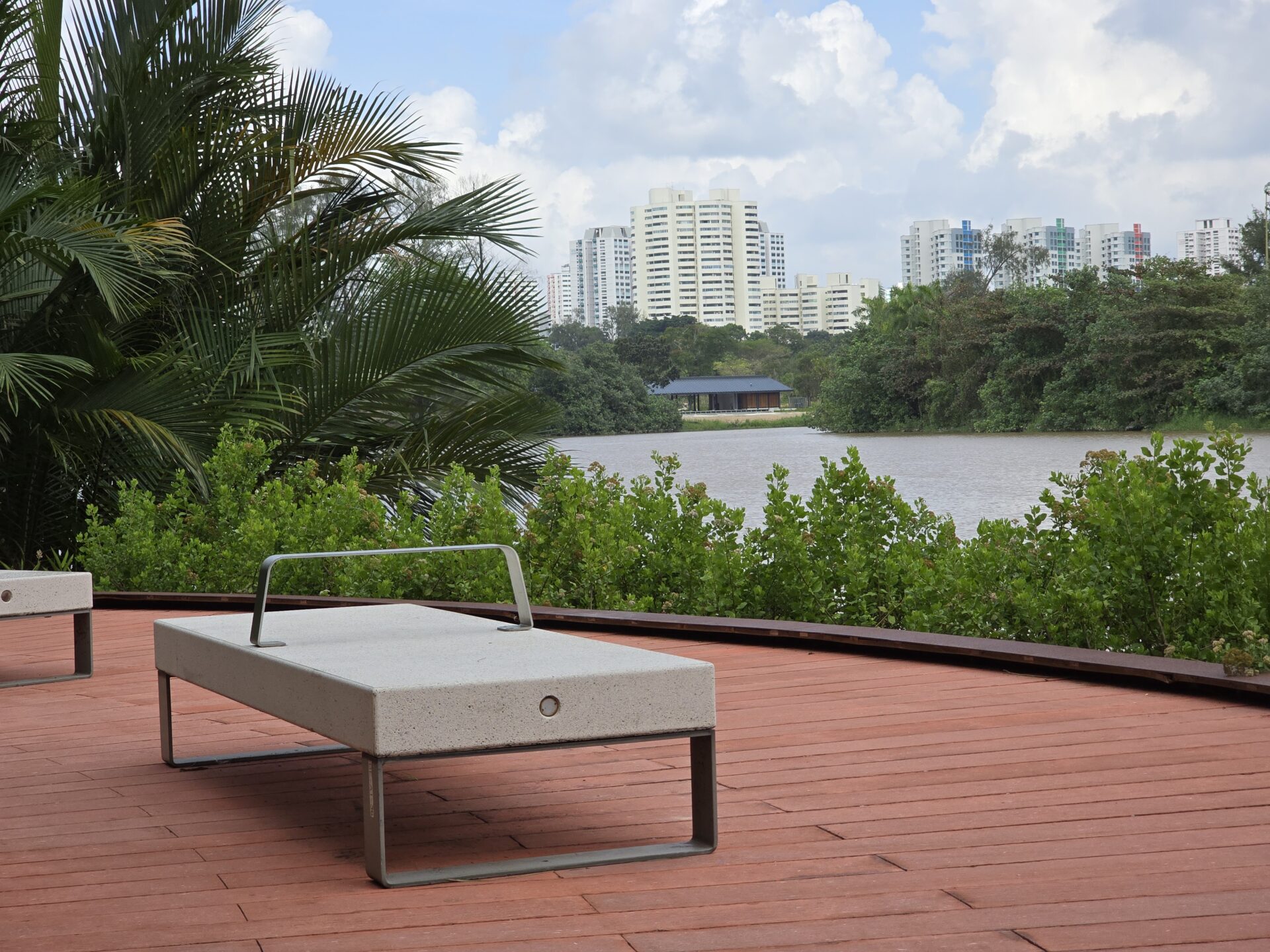
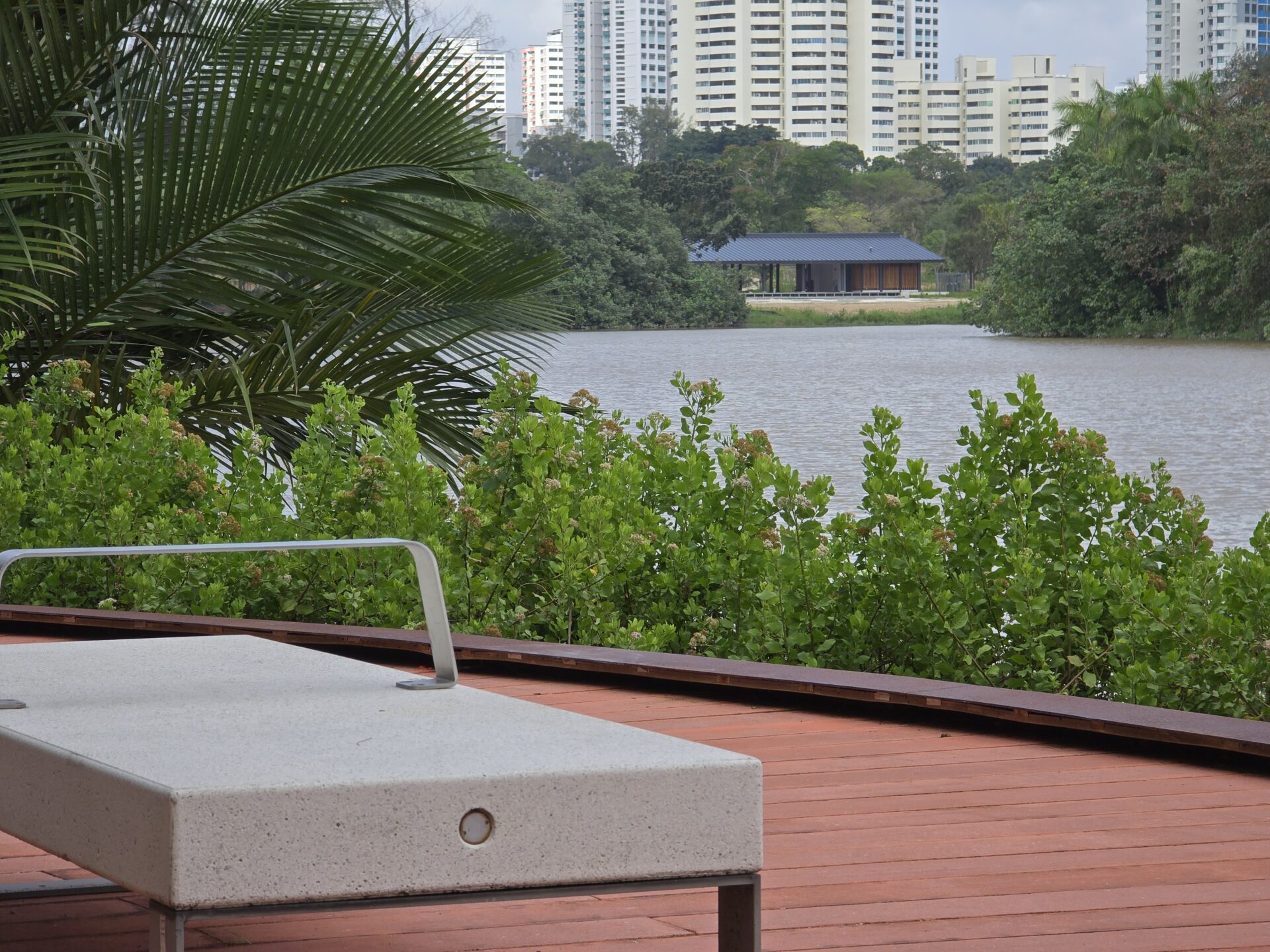
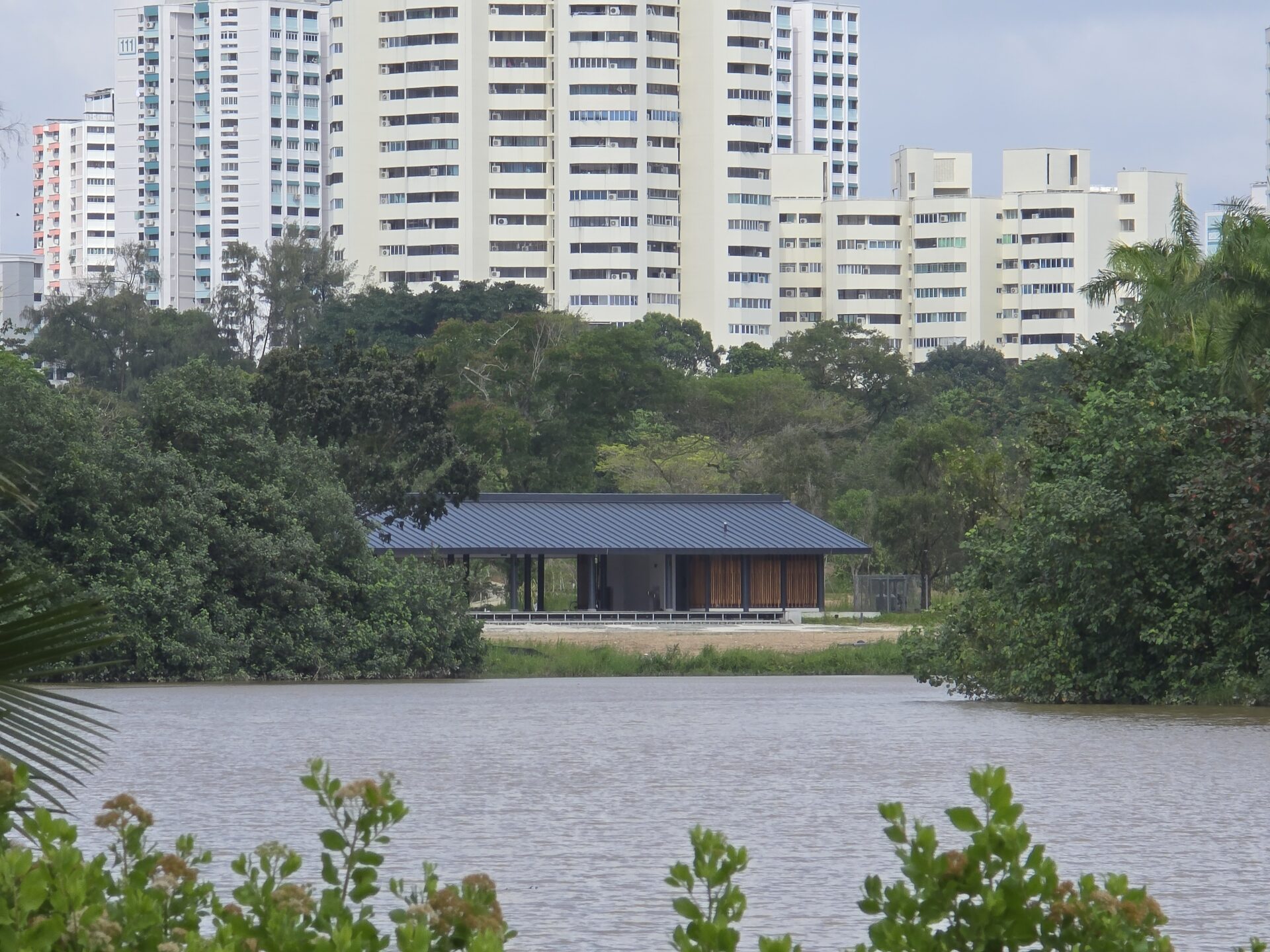
At yet another spot I’d call Mythical Beasts, the ultrawide shot offers vibrant colours, though I can detect purple fringing on the trees. The wide shot basically retains excellent detail throughout (maybe except the lalang on the right side), while reducing the purple fringing earlier. At 3x, the mythical deer remain crisp and the greenery sharp.
The composition and detail retention of the 5x shot are perfect, demonstrating the benefits and use case of a camera at this zoom level. The 10x zoom, meanwhile, gives us a very clear look at the textures of our beasts without much blur.
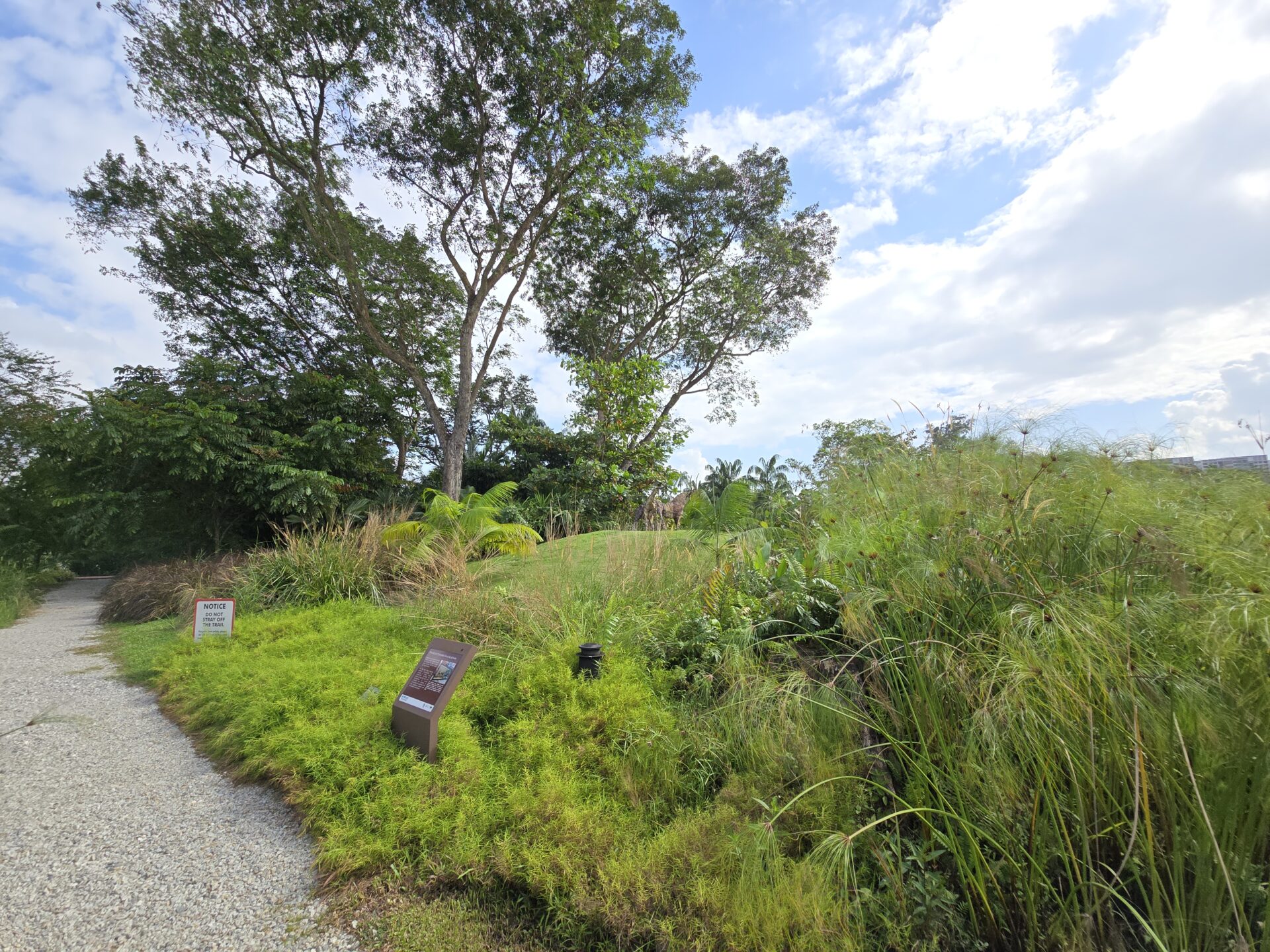
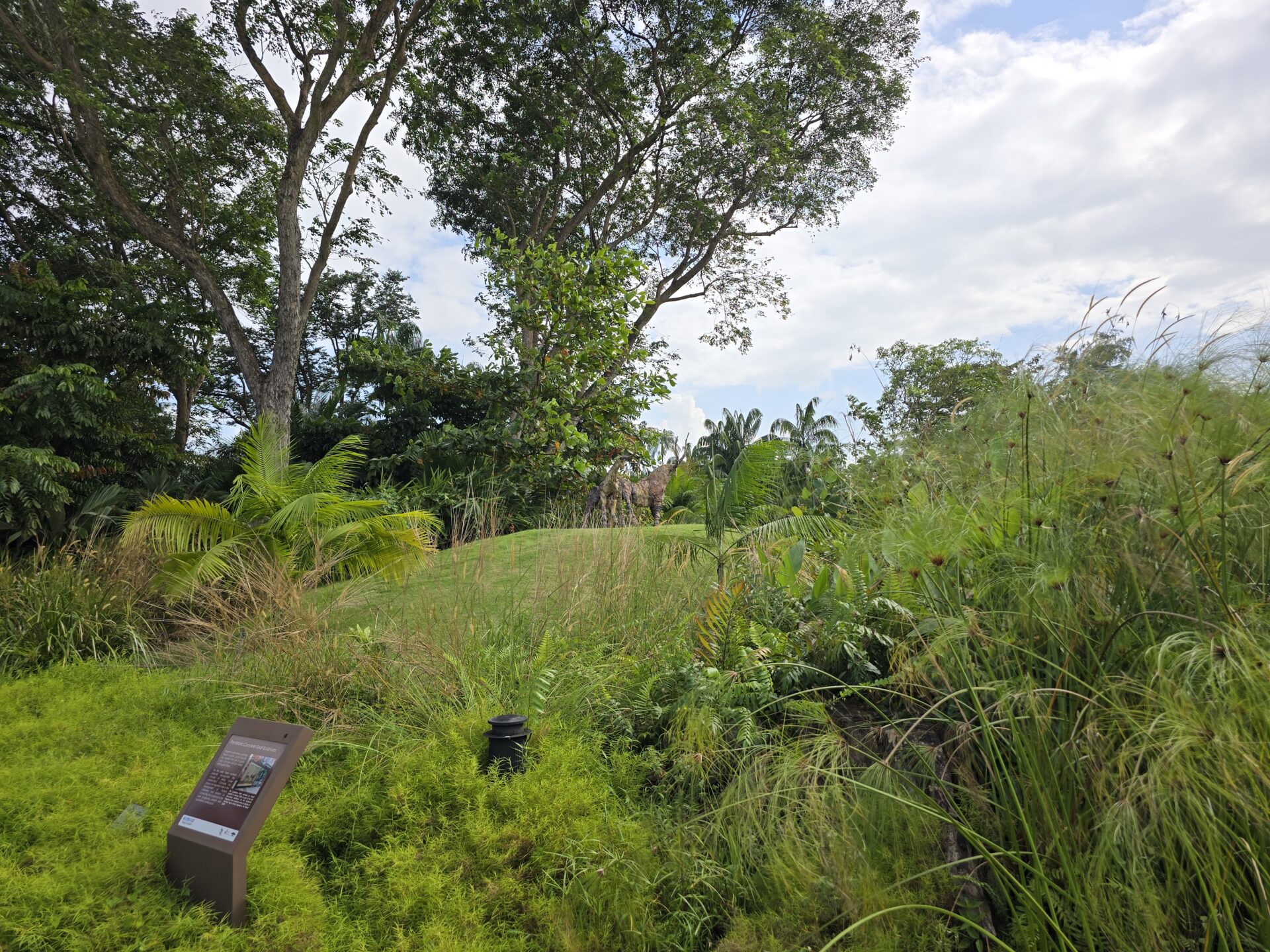
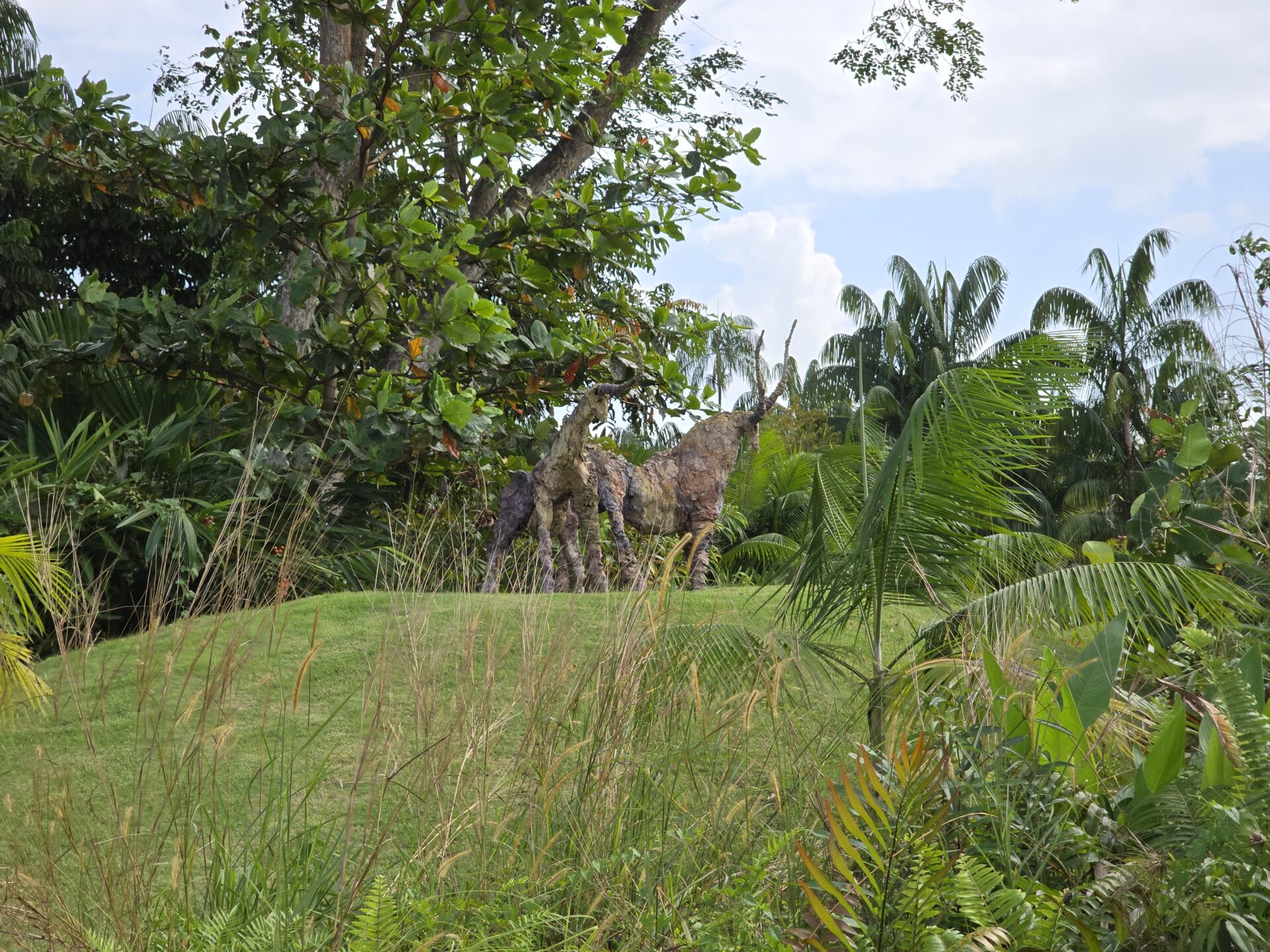


At night, I went to National University of Singapore (NUS). For these evening shots, the software processing on the Galaxy S24 Ultra ensured an overall ultrawide shot was well lit despite the darkness of the field (see below).
That said, you can see from the somewhat fuzzy trees and the blown-out NUS sign that this is stretching the limits of the small aperture lens.
The wide shot here fills in the missing details nicely, and you are able to clearly make out the six groups of friends gathering on this dry, cooling night.
The 3x telephoto shot renders the roof, as well as walls and railings on the upper floors of the building, beautifully, without losing detail or blowing out the shopfronts on the first floor.
The amount of detail in the 5x shot is astounding, arguably better than the 3x. Notice that the signs on the bottom left of the shot remain very readable. The night shot remains pretty well taken even at 10x – you can still make out good outlines on the tree and the shopfront on the first floor.
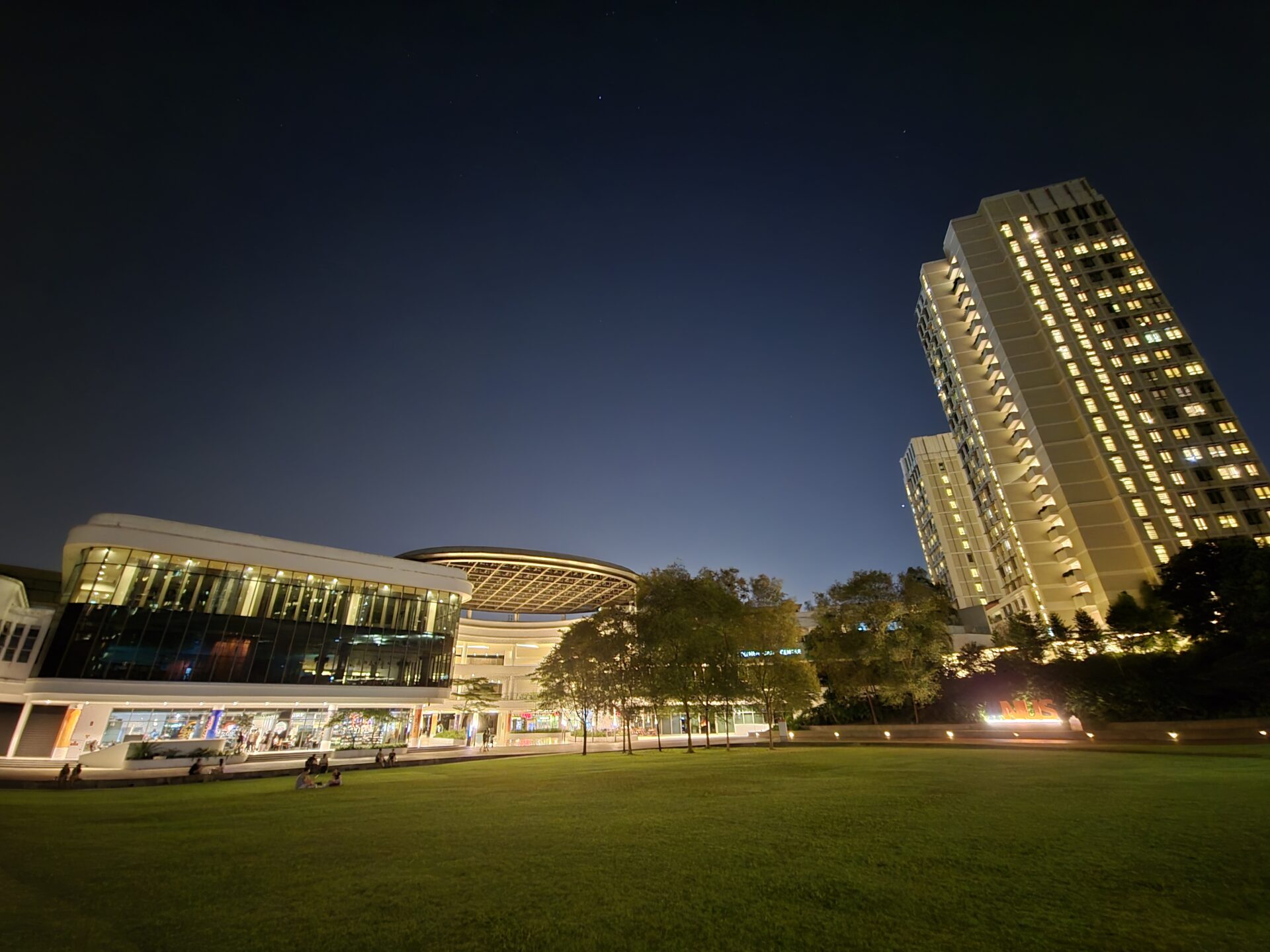
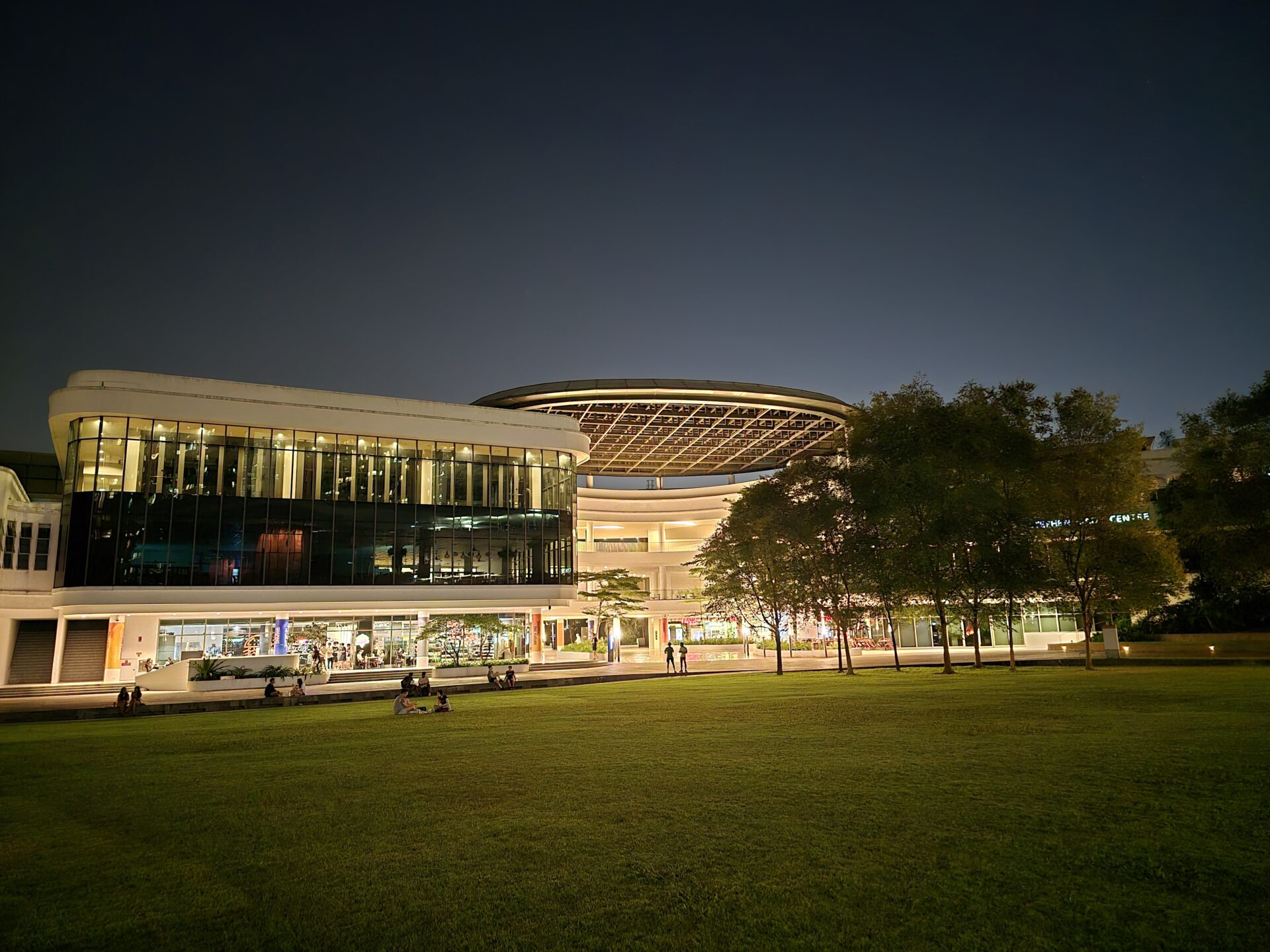
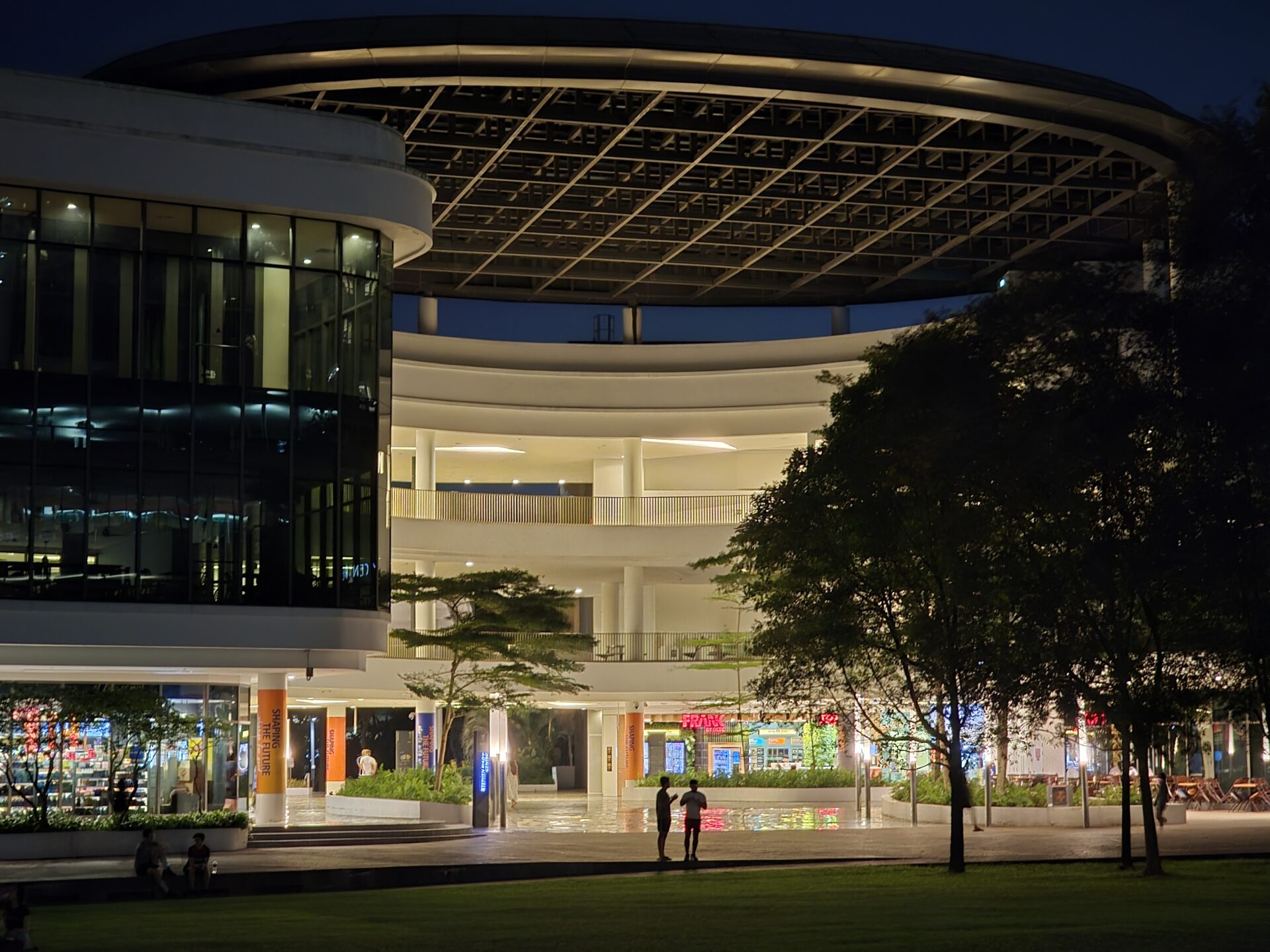
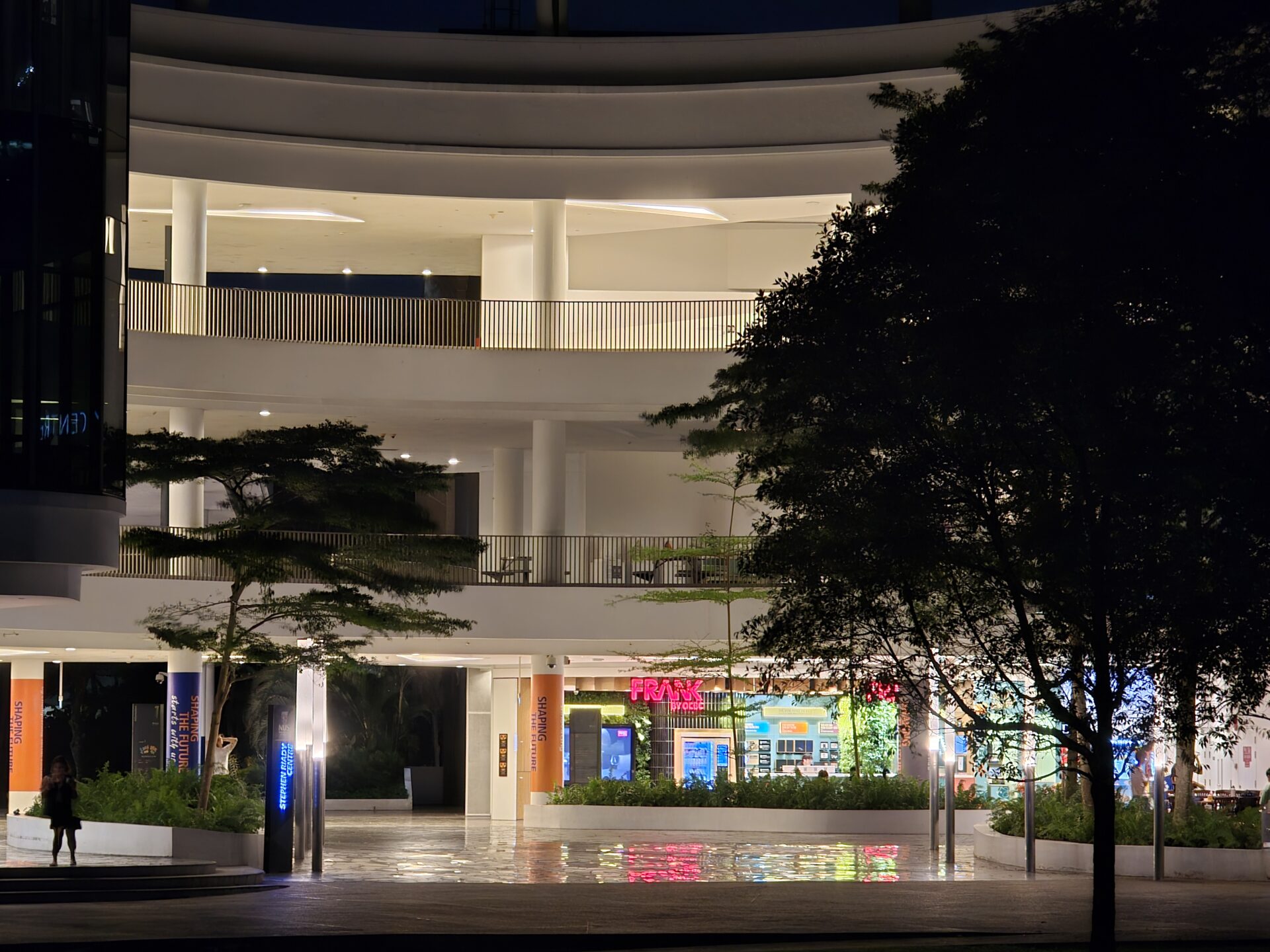
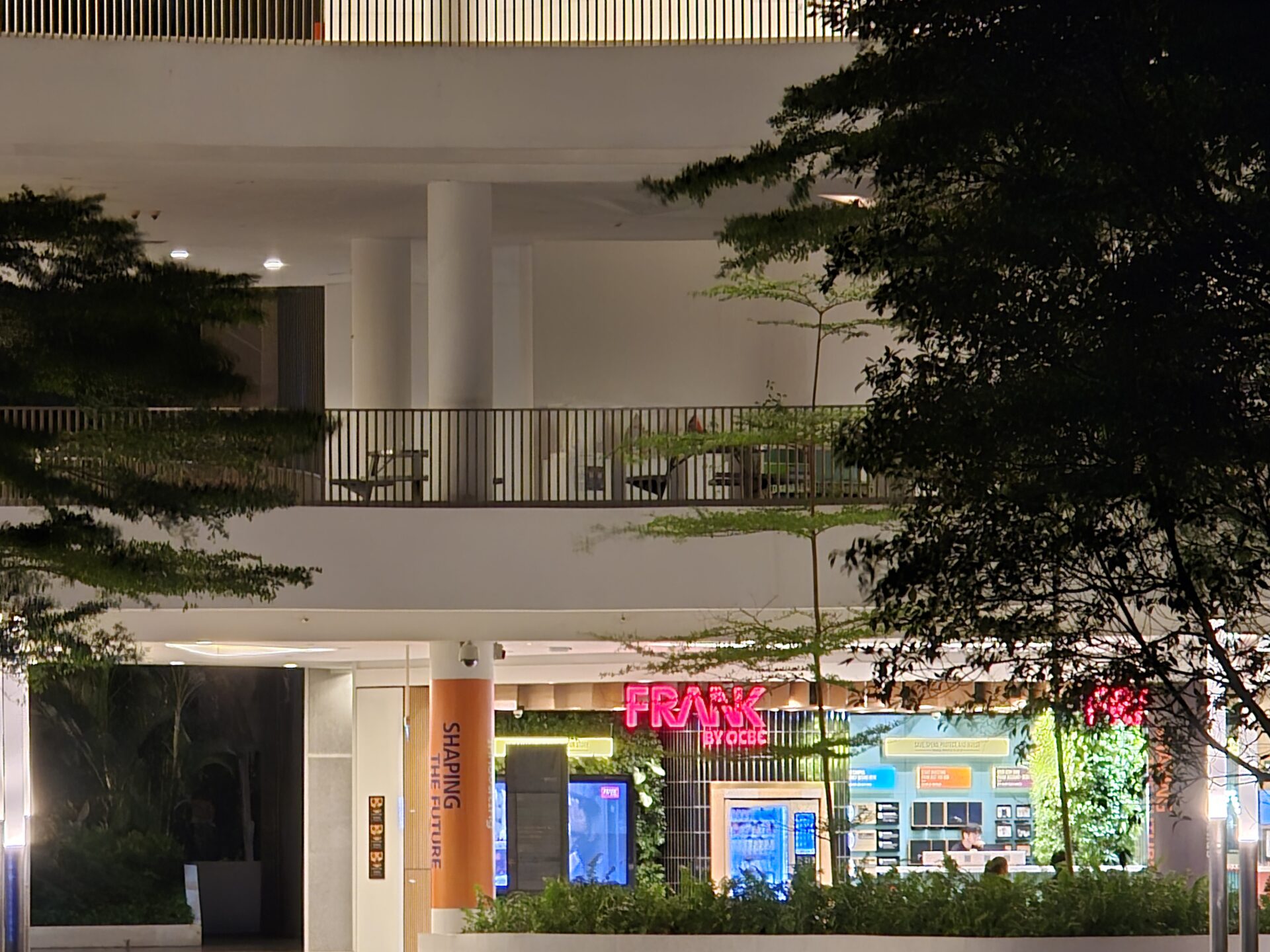
As the following shots will shot, the ultrawide shot on the new Samsung phone is very tasteful, with no distortion in the corners, nothing blown out. Plus, there is good detail on both the grass patch and seating areas.
The wide shot leaves no detail, to chance, and I am particularly impressed with how the apartment block on the left of the shot is not just flat and dark, but actually retains a light gradient from the bottom to top floors.
At 3x zoom, the seats on the upper deck remain crisp and detailed and nothing looks blown out. For the 5x telephoto shot, while it lacks a bit of saturation, especially on the top left, you have to give props to the camera for capturing the amount of detail on the wall despite the low light environment. None of these details are lost even at 10x zoom.
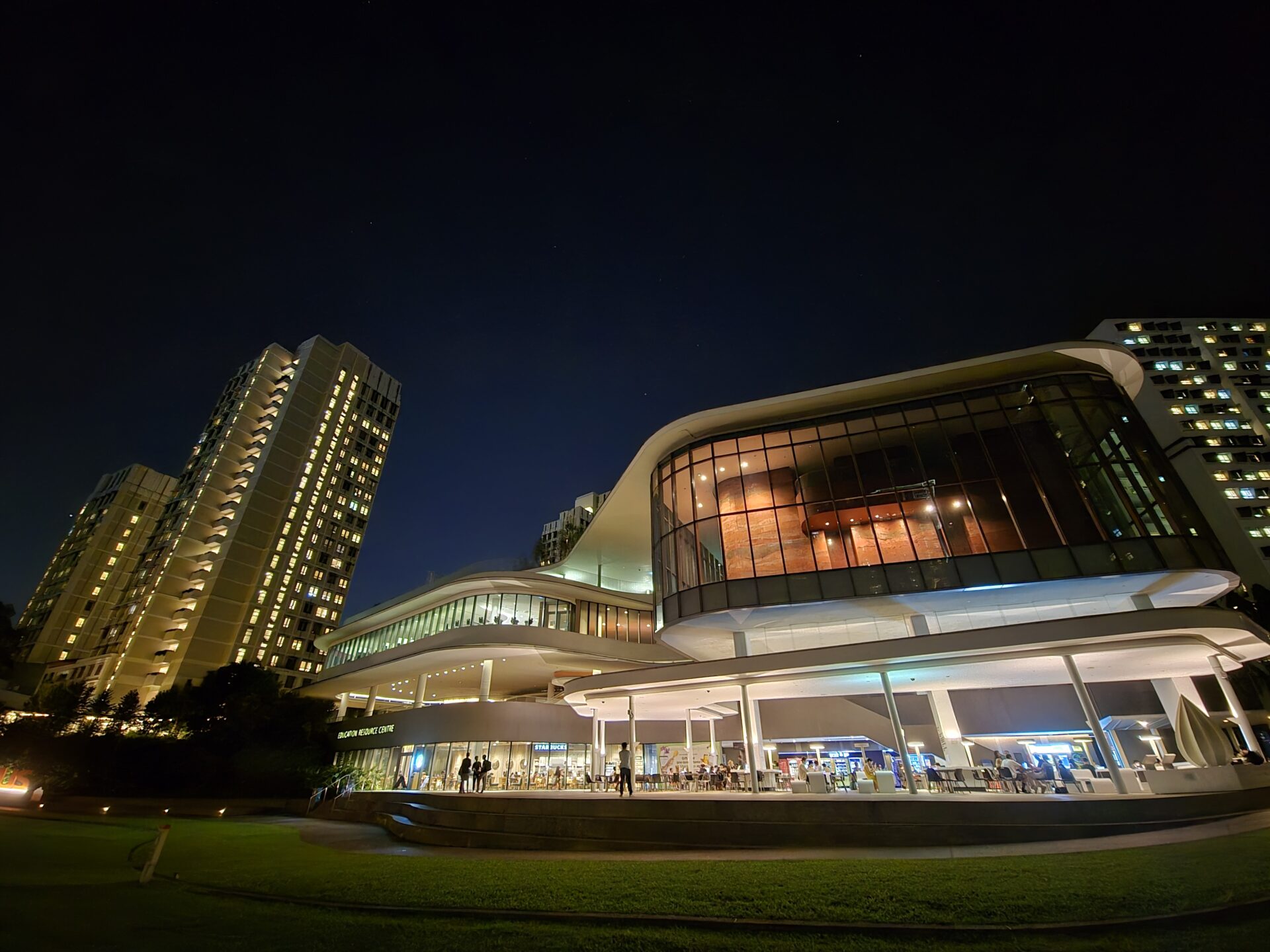
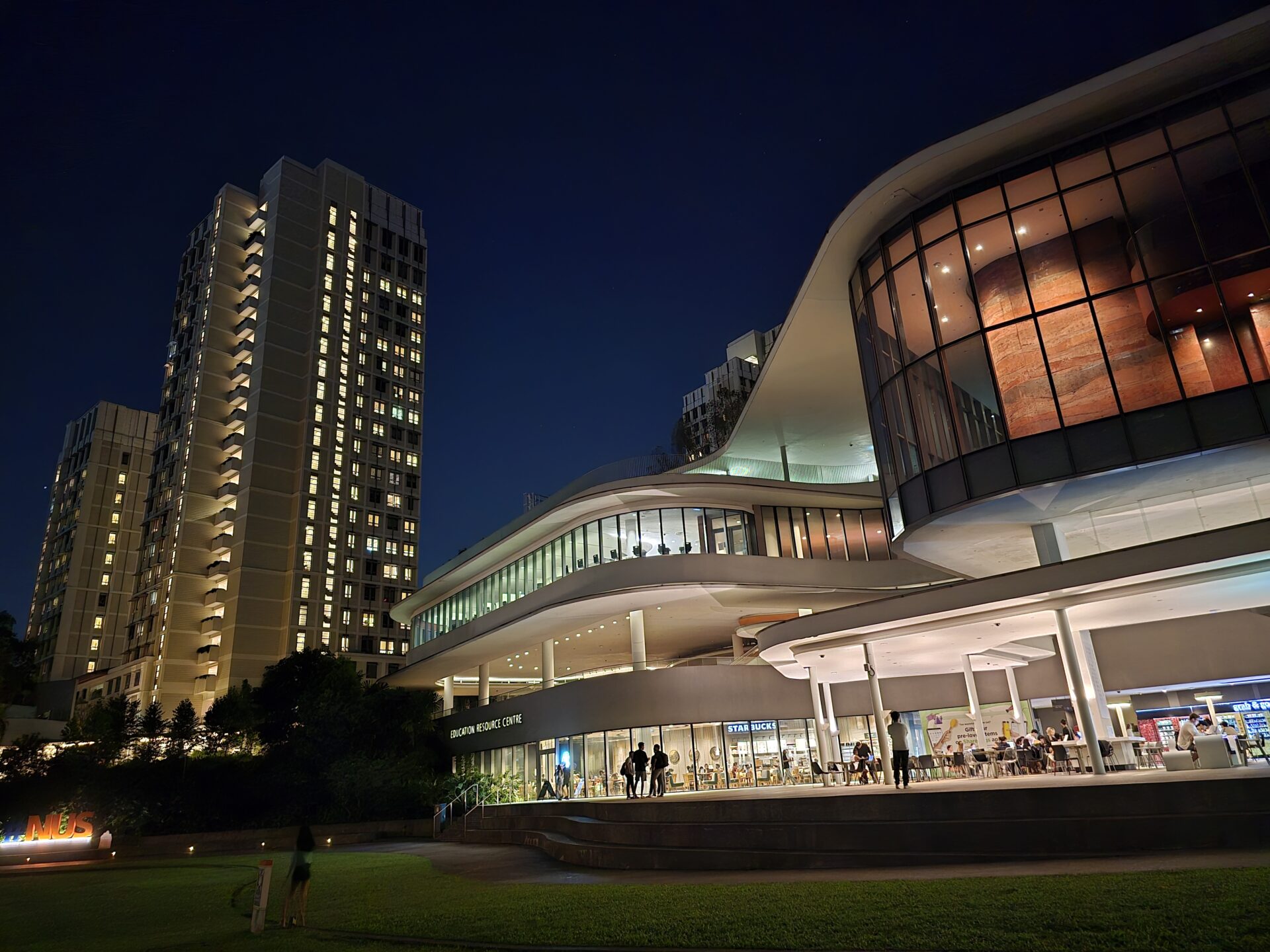
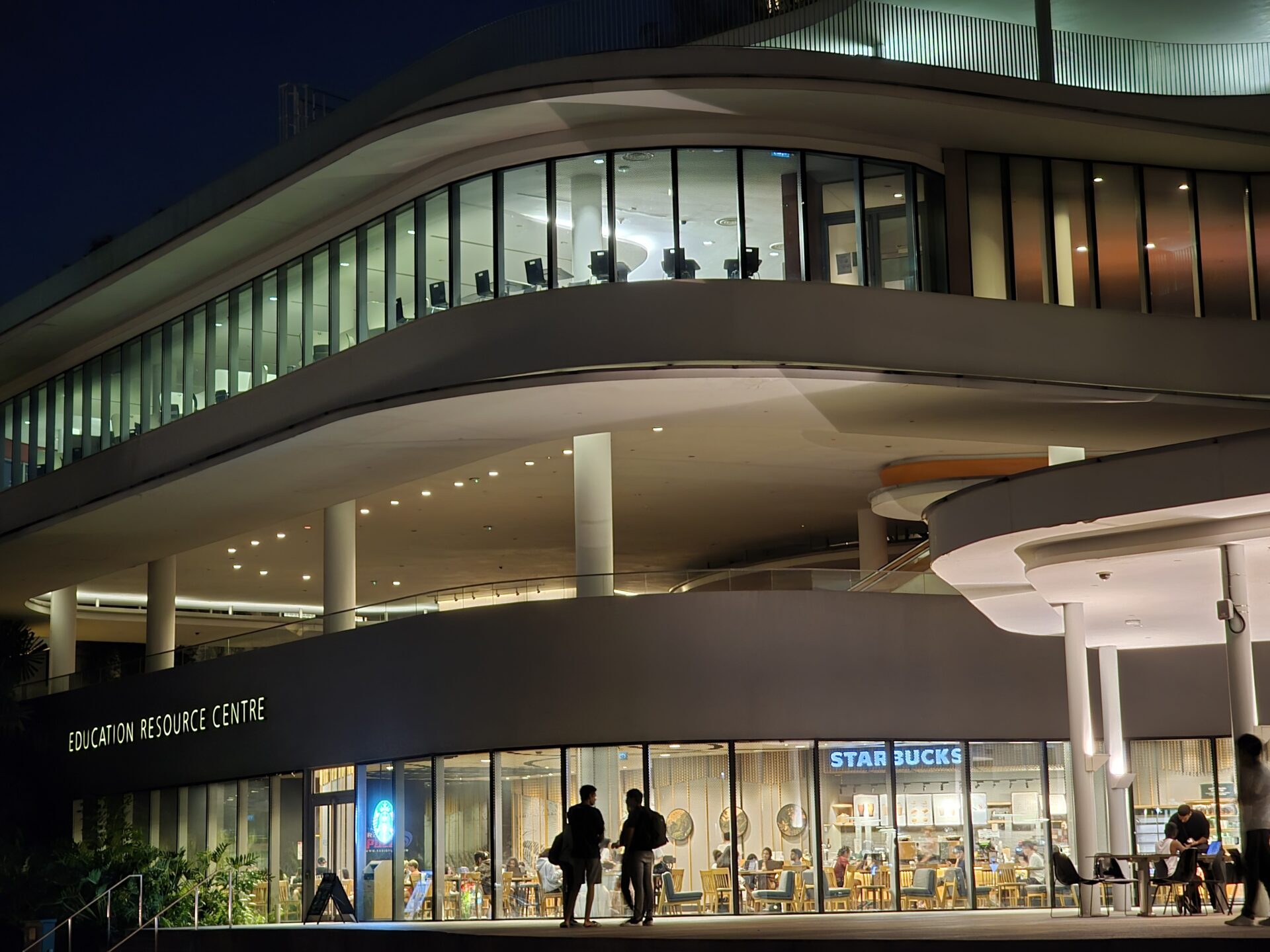
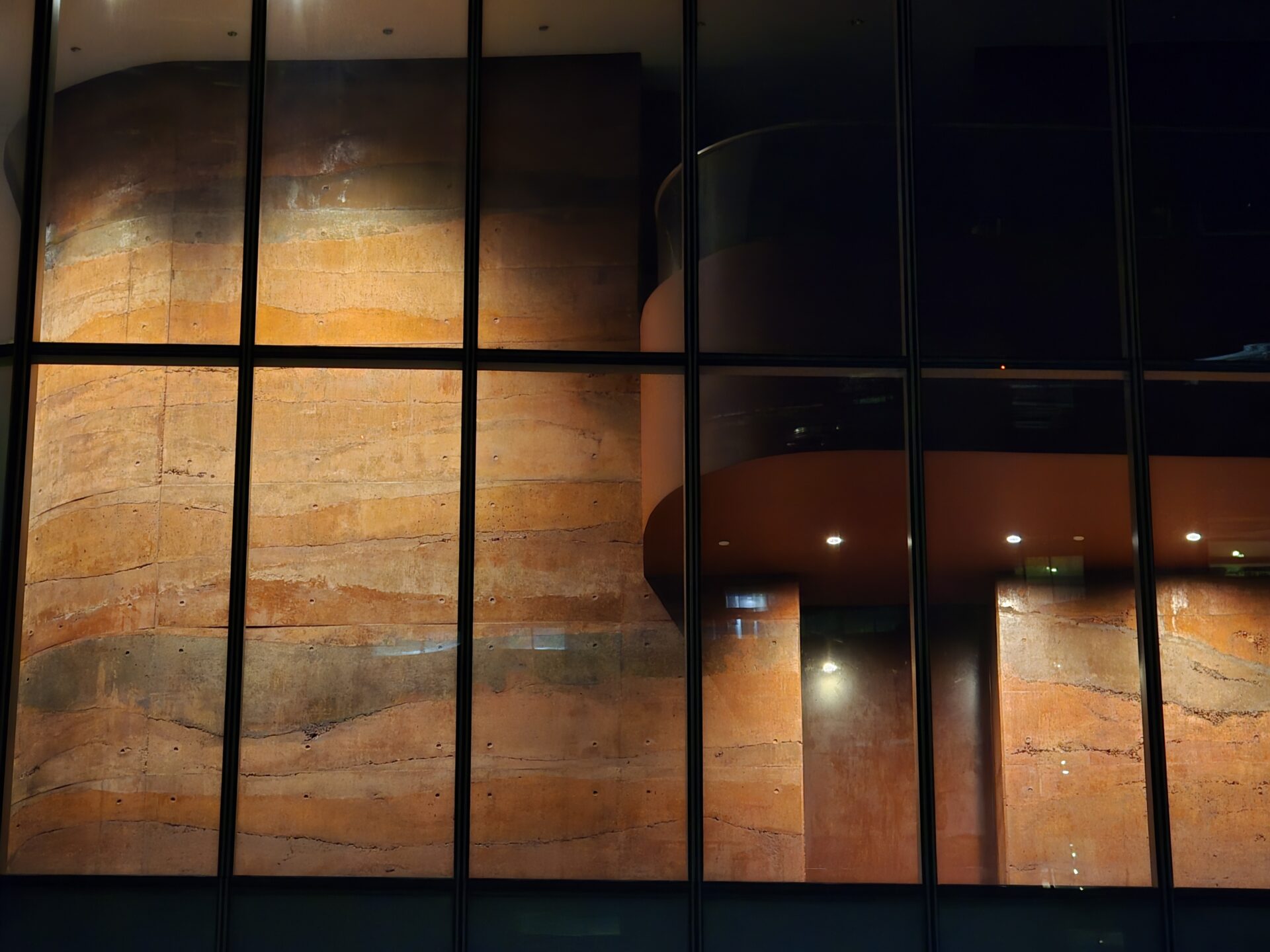
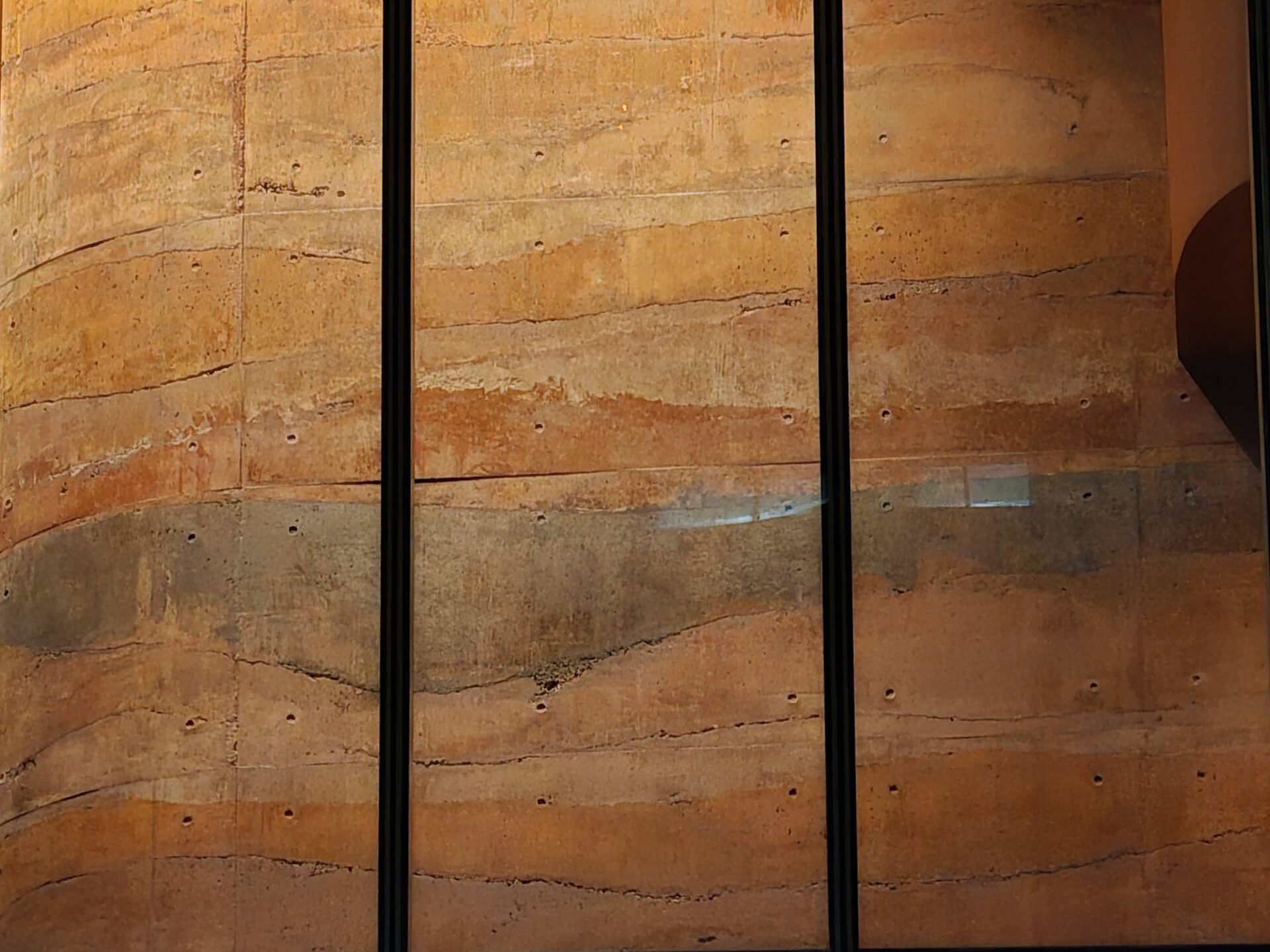
At another scene at NUS’ U-Town buildings (below), I find little distortion and blowing-out on the ultrawide shot, though you do detect some loss of detail towards the corners of the picture.
The capacity of the wide camera sensor in capturing and processing detail is impressive. You can make out the leaves lit by the light near the tree, and the maroon shrubbery adorning its base despite the lack of light.
At 3x, the entire walkway remains tastefully detailed, focused and balanced. Again, however, the 5x camera looks to be doing a better job with detail – just check out the difference in how the two cameras captured the ageing of the H-shaped structural beams.
At 10x, the block number lettering remains very clear, demonstrating the prowess of the zoom capabilities of the Galaxy S24 Ultra.
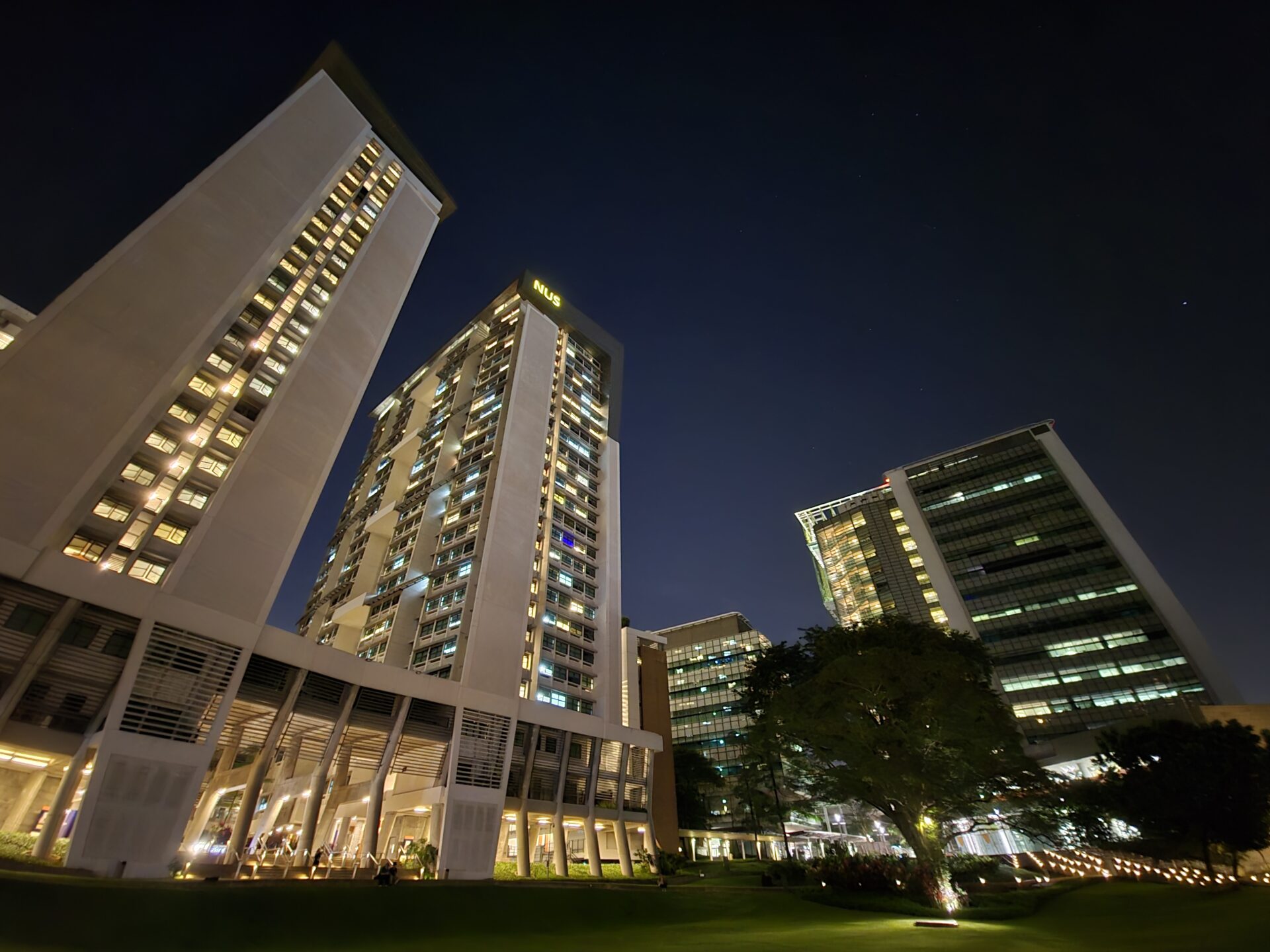
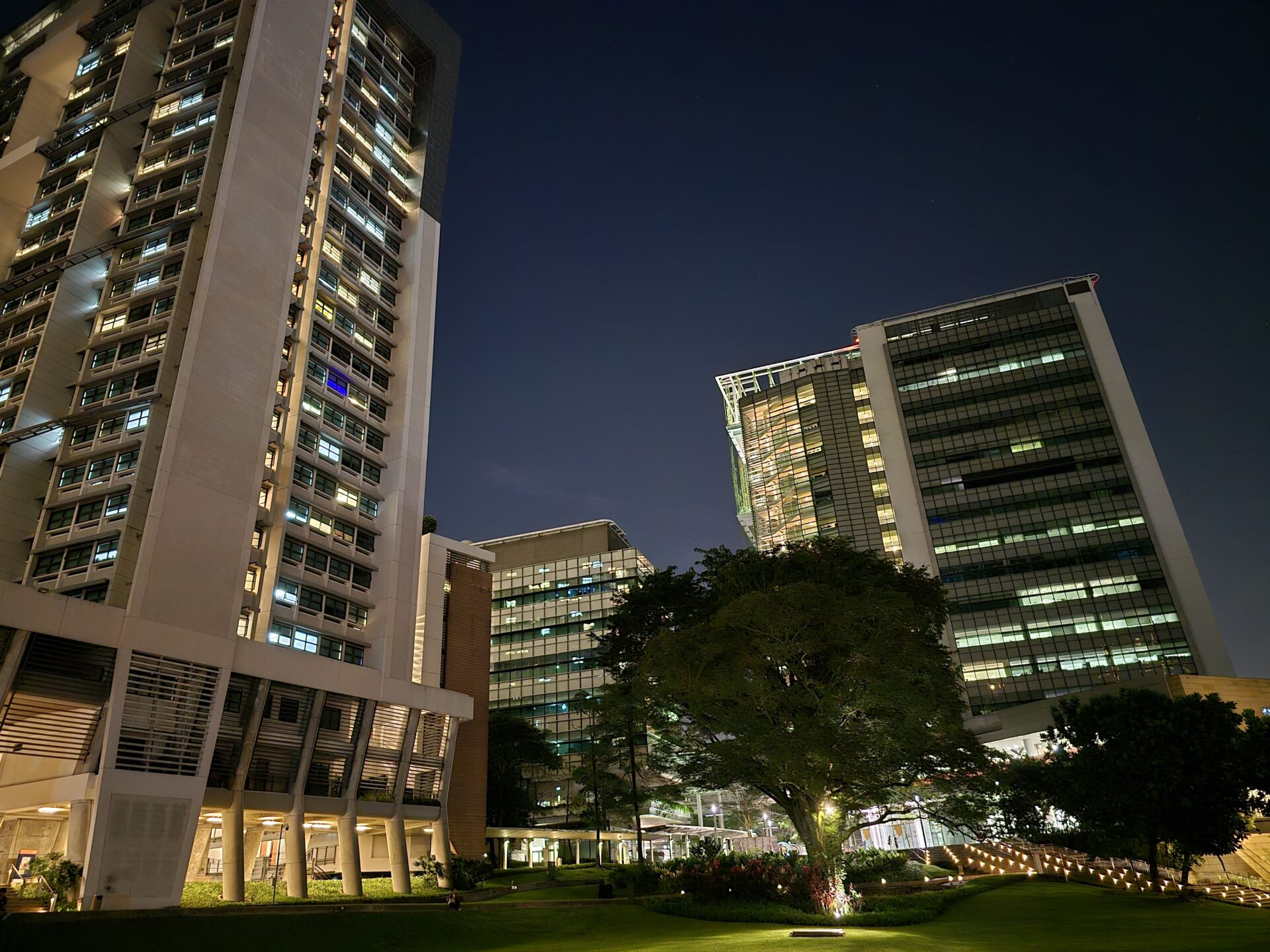
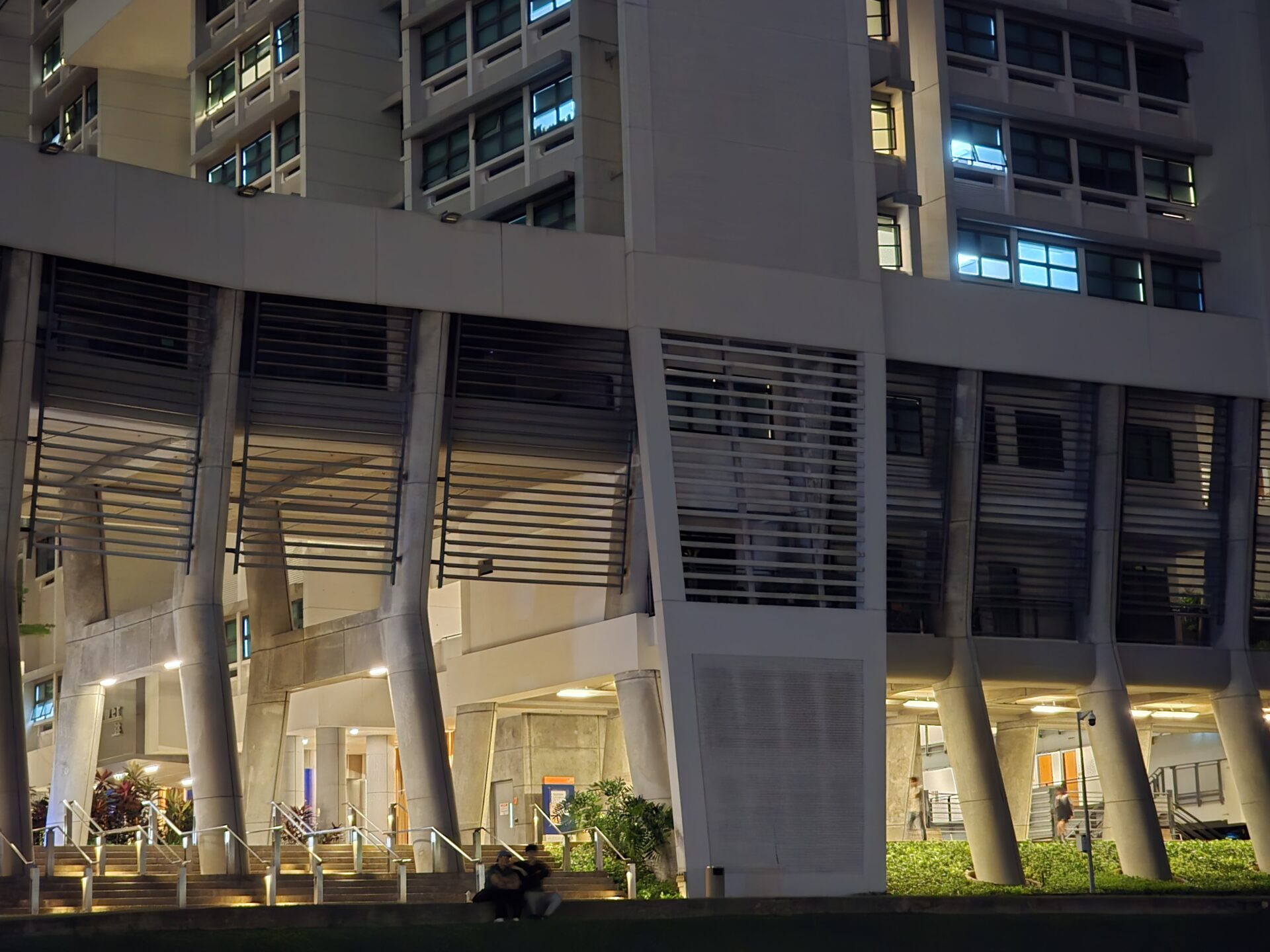
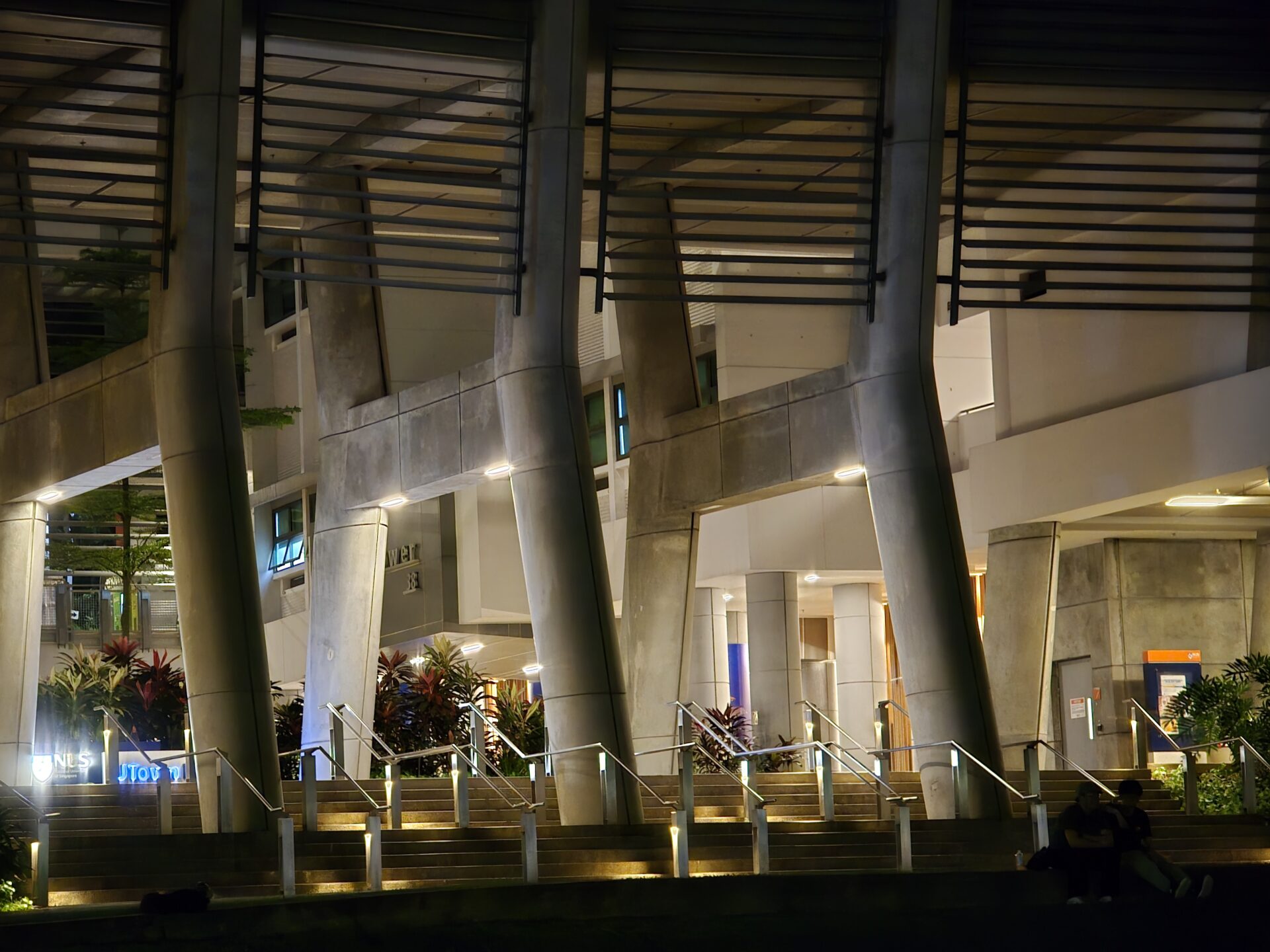
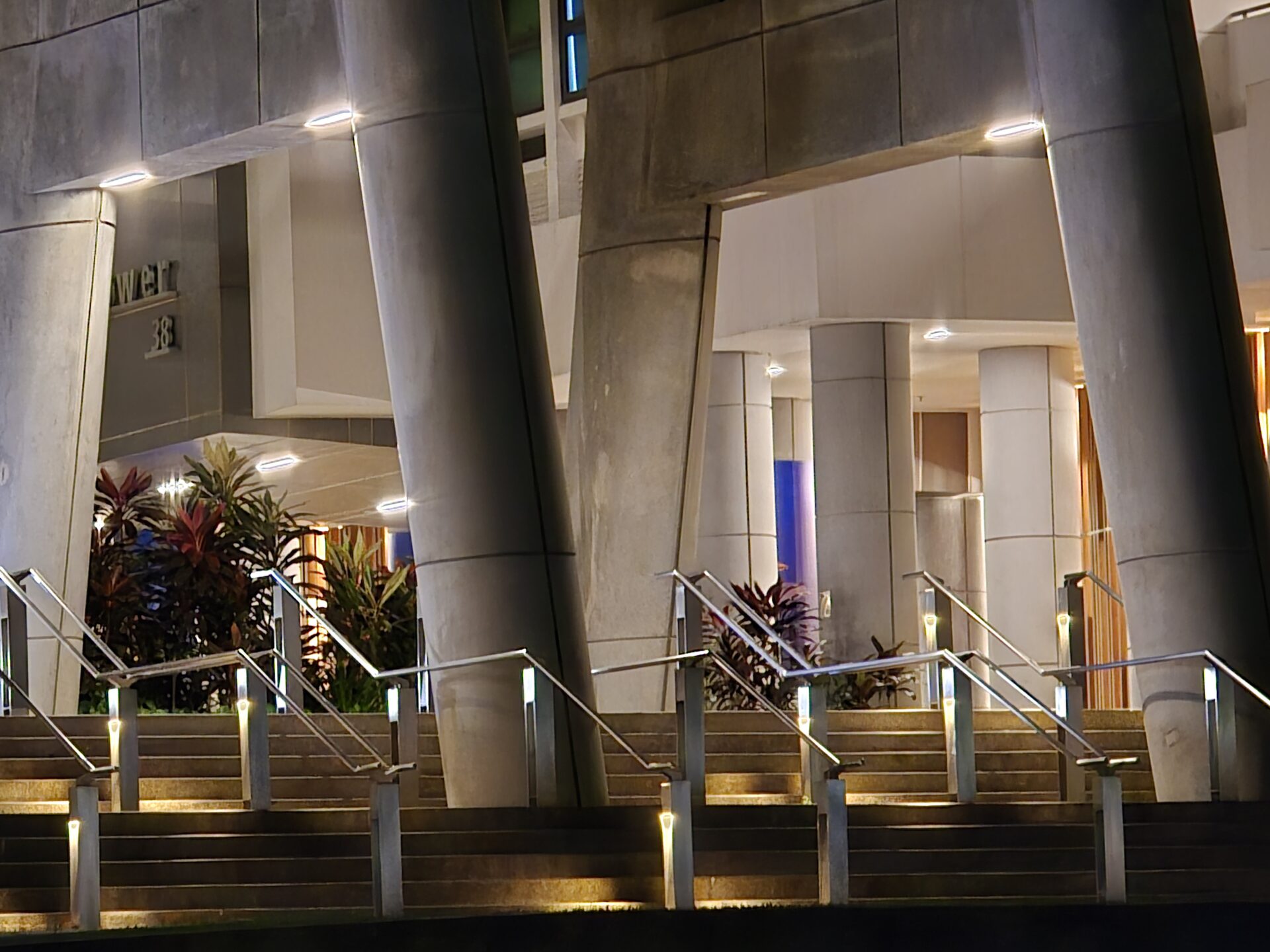
Conclusion
The Samsung Galaxy S24 Ultra is a well-executed upgrade to the already excellent Galaxy S23 Ultra.
The design changes may seem unexciting, but the flatter display is an ergonomic upgrade. It’s also easier to add tempered glass screen protectors this way.
The 50MP, 5x telephoto camera is, surprisingly, an upgrade despite a reduction in zoom distance. It fills gaps in camera zoom distances without losing much quality at the Galaxy S23 Ultra’s famed 10x zoom at all.
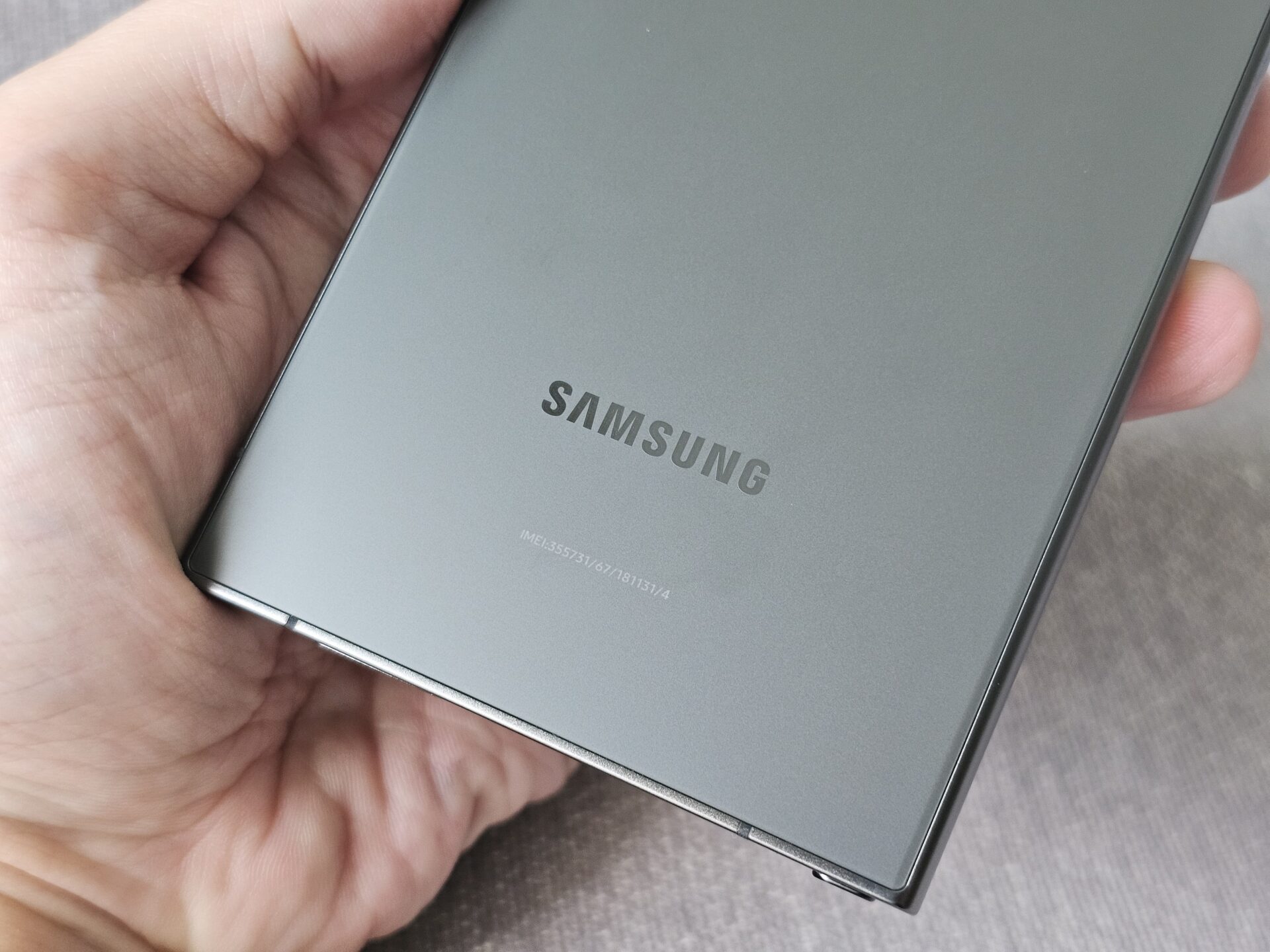
Okay, the new phone’s 3x telephoto camera feels like it should have received a resolution upgrade with the other telephoto camera, but this is probably a quibble.
So, on the whole, fundamentals remain strong with this new Samsung flagship. The phone is responsive, its body is more fingerprint resistant than before. Battery life remains decent, even if there are no big generational improvements.
The Samsung Galaxy S24 Ultra is a great phone we’re happy to recommend, if you can afford it, of course. At S$1,928, it’s even more expensive than last year’s model.
However, there are overtrade deals at launch that take a good chunk off its hefty price tag when buying directly from Samsung. Plus, telecom operators are trying to attract users to sign up for subscriptions with discounts.
If you’re able to get a good deal to meet your budget, the Galaxy S24 Ultra is an attractive top-end phone to definitely check out.
